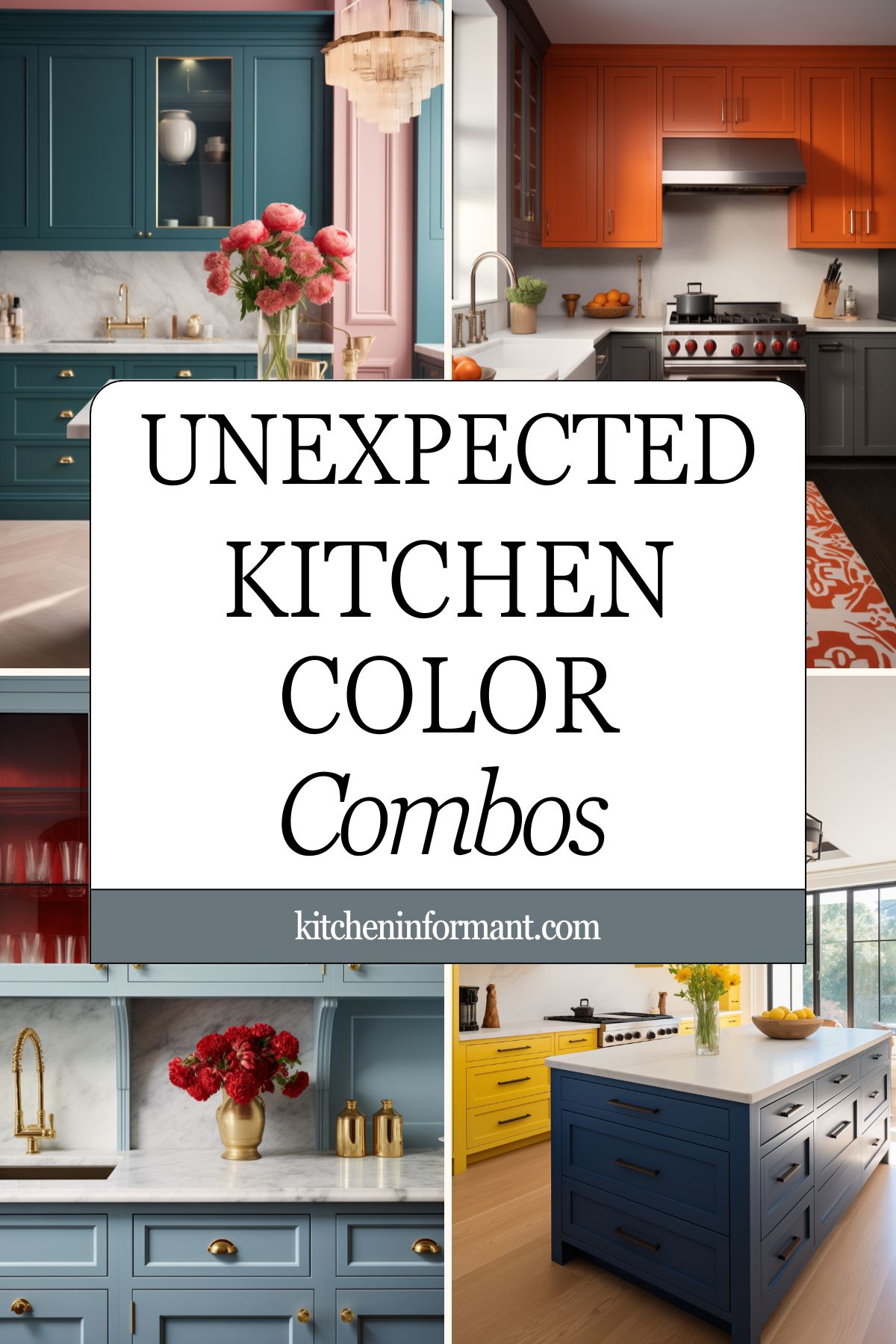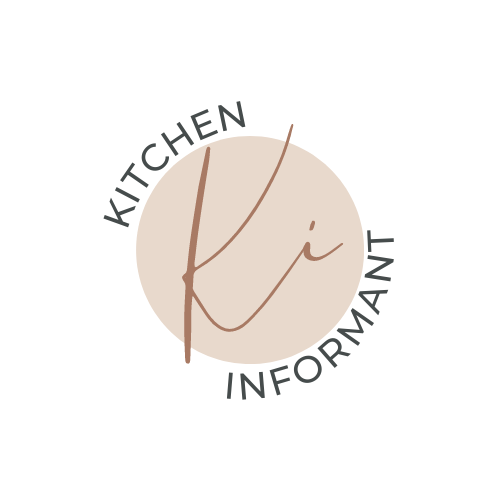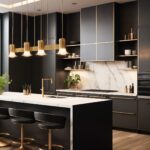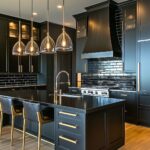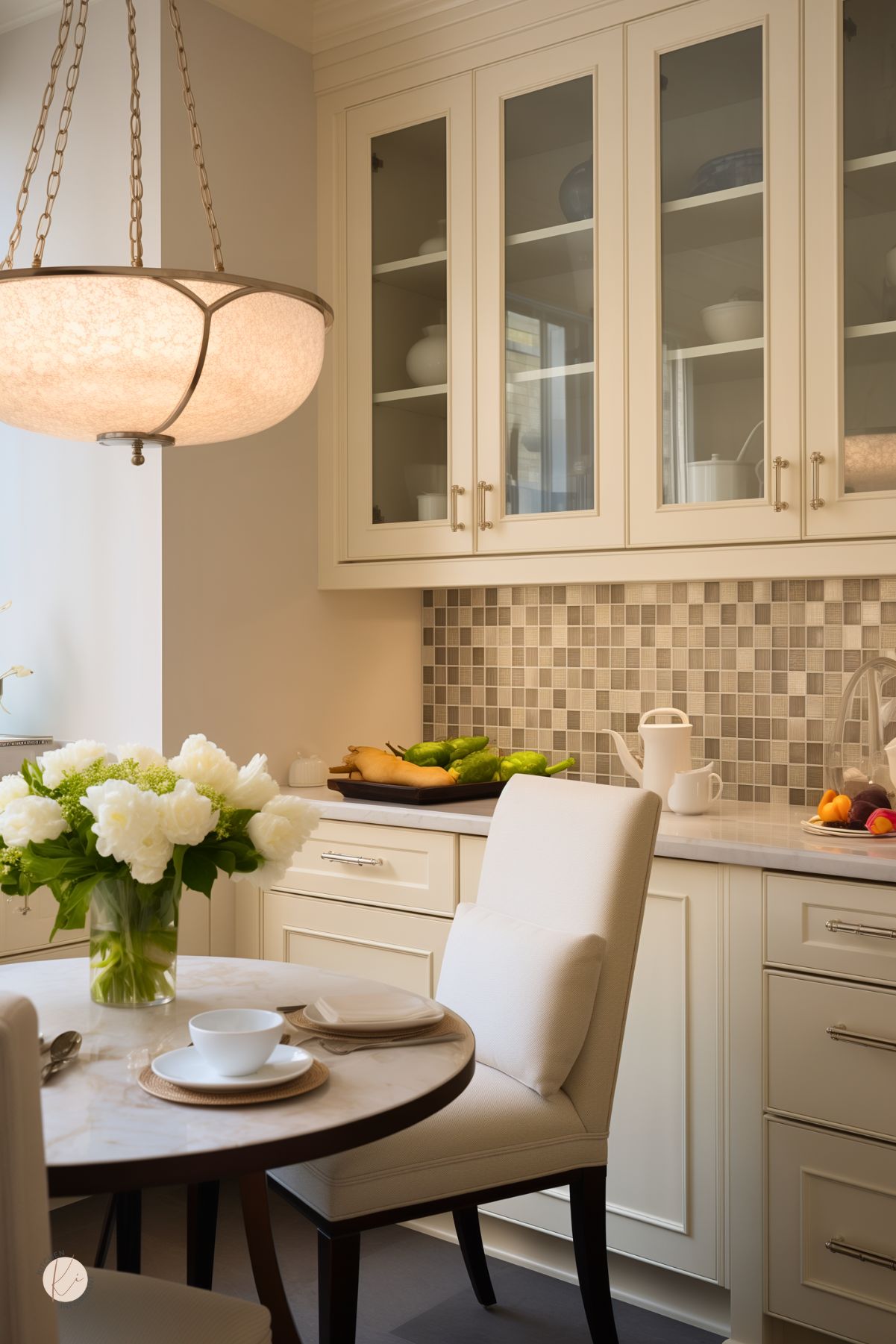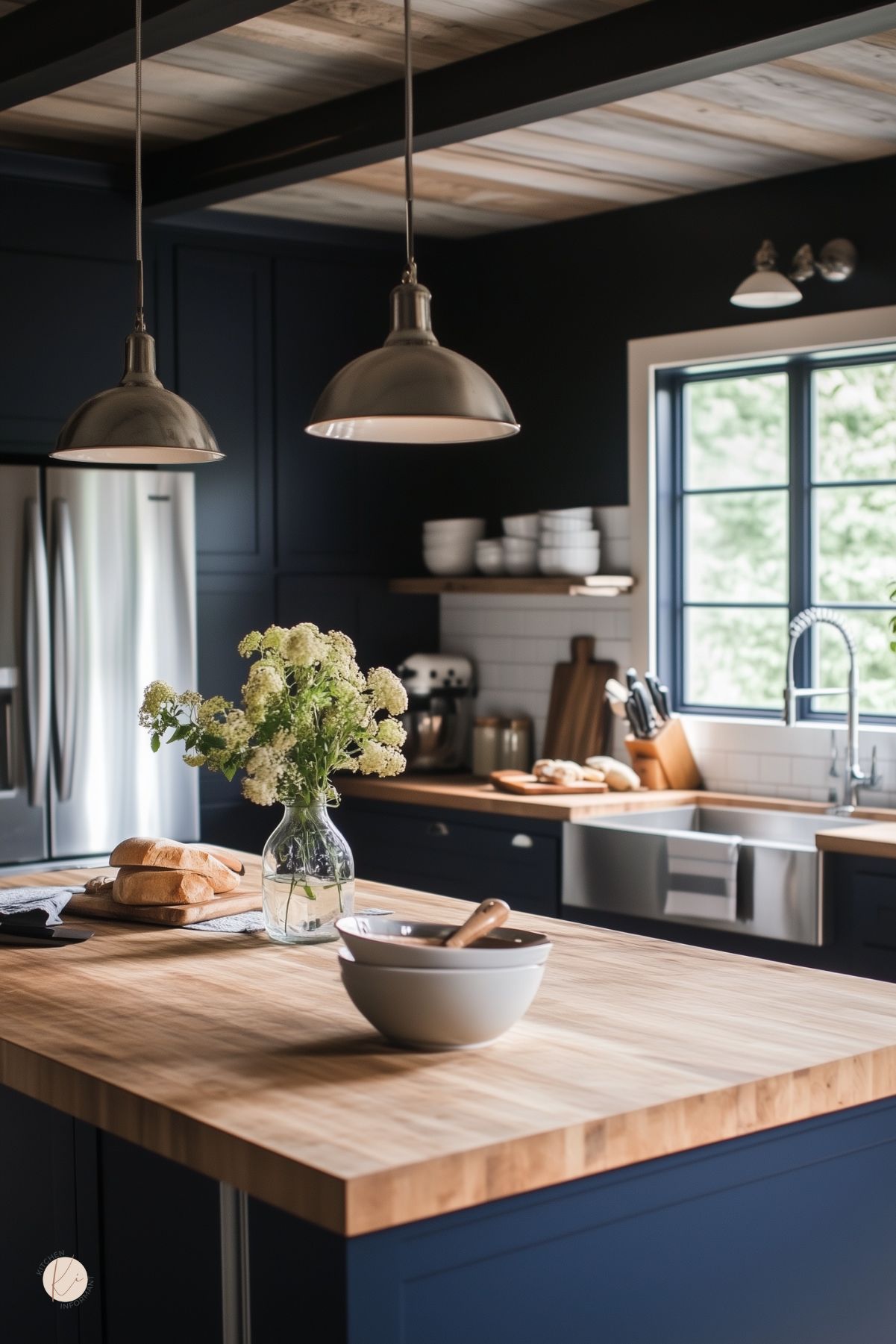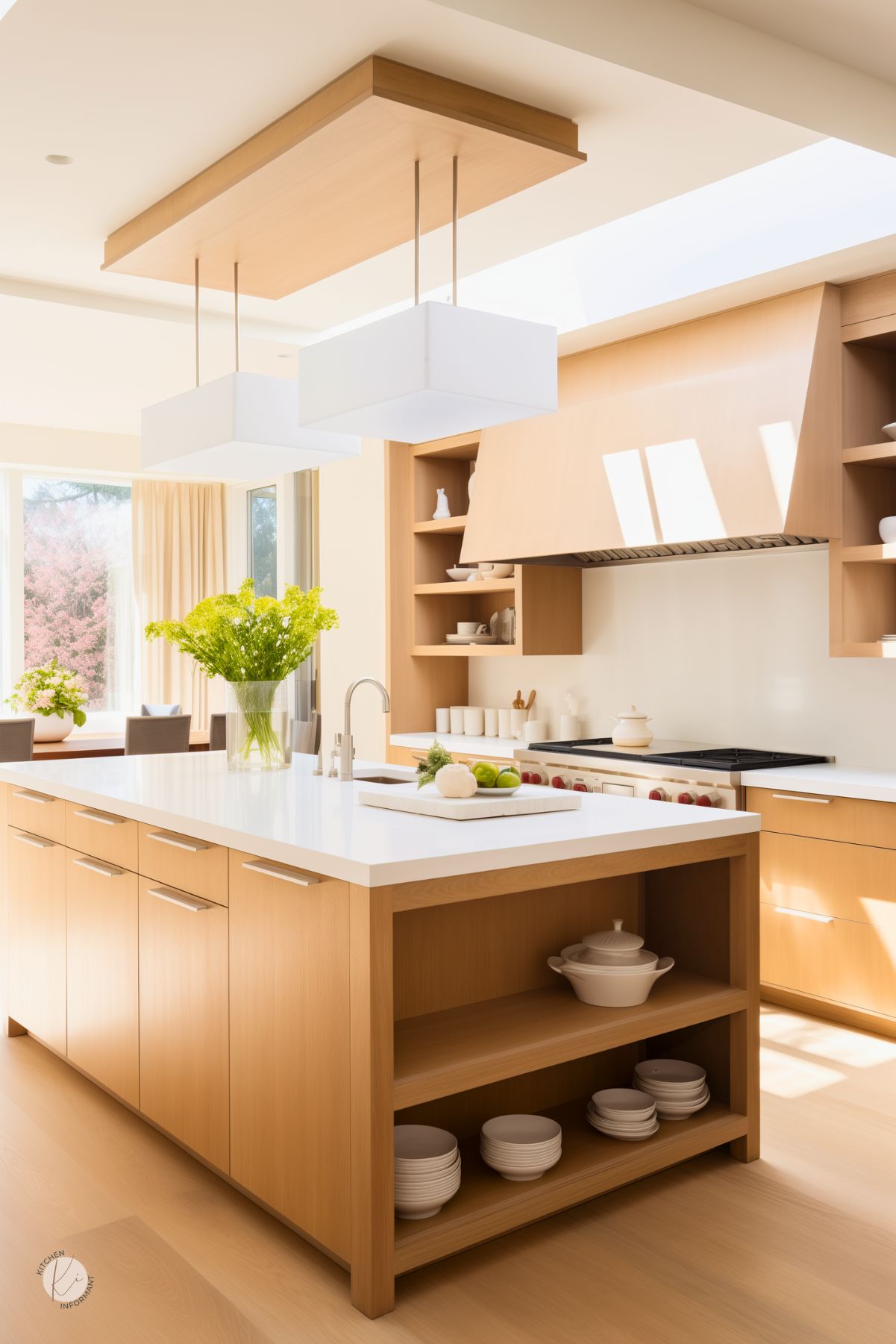Many homeowners want to create a unique kitchen space that reflects their personal style.
Unexpected color combinations can transform a kitchen from ordinary to extraordinary, creating a lively and refreshing atmosphere.
Embracing colors that might seem mismatched can lead to stunning results when done right.
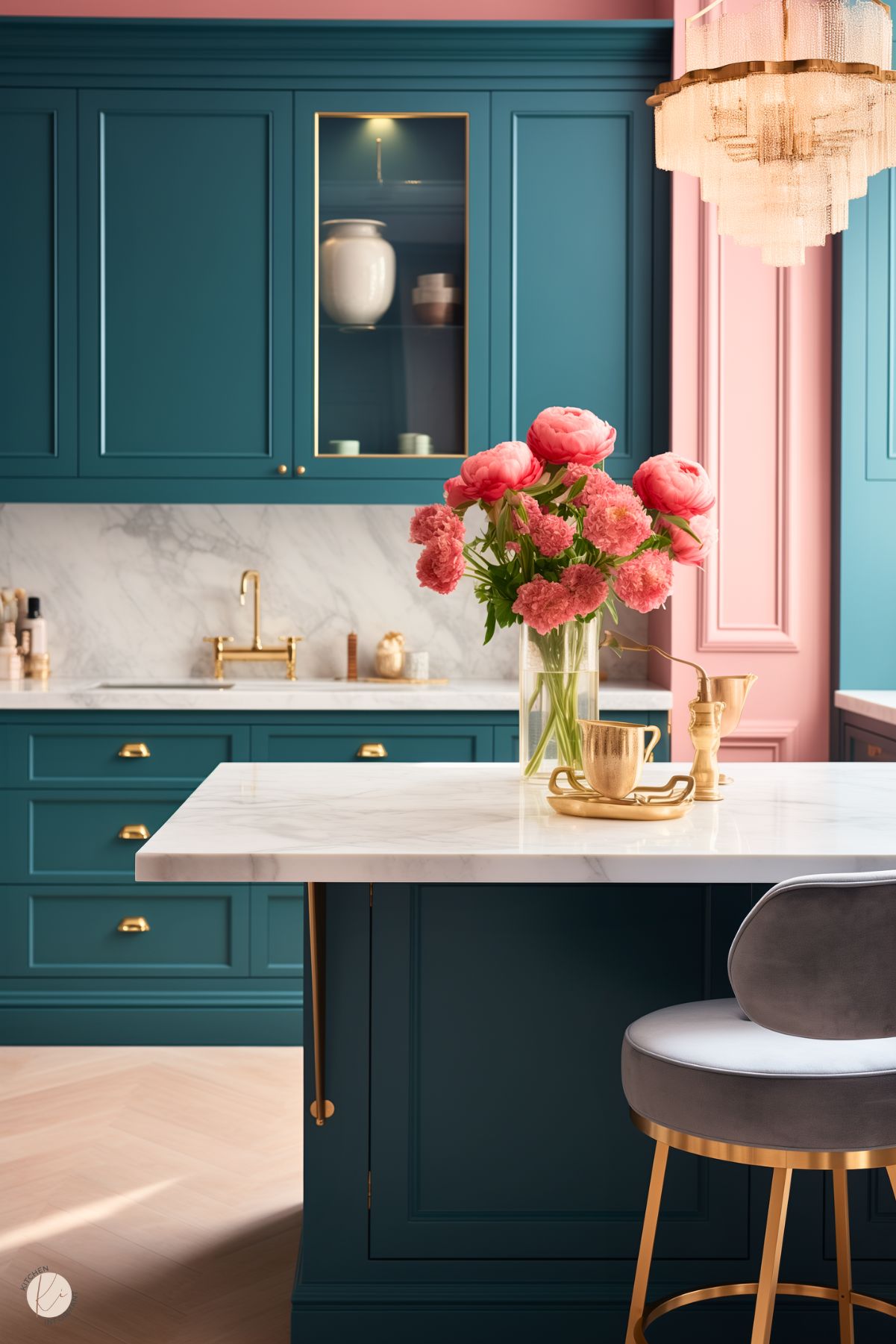
Designers often suggest unexpected pairings to add character to the kitchen.
For example, combining teal with mustard or deep blue with soft pink can create a captivating look.
This approach not only breaks the monotony of traditional color schemes but also allows for creativity in home decor.
Those looking to revamp their kitchens will find that trying out these bold color combos can enhance the overall appeal.
By exploring various palettes, anyone can discover the perfect mix that brings warmth and personality into their culinary space.
The Impact of Color in Kitchen Design
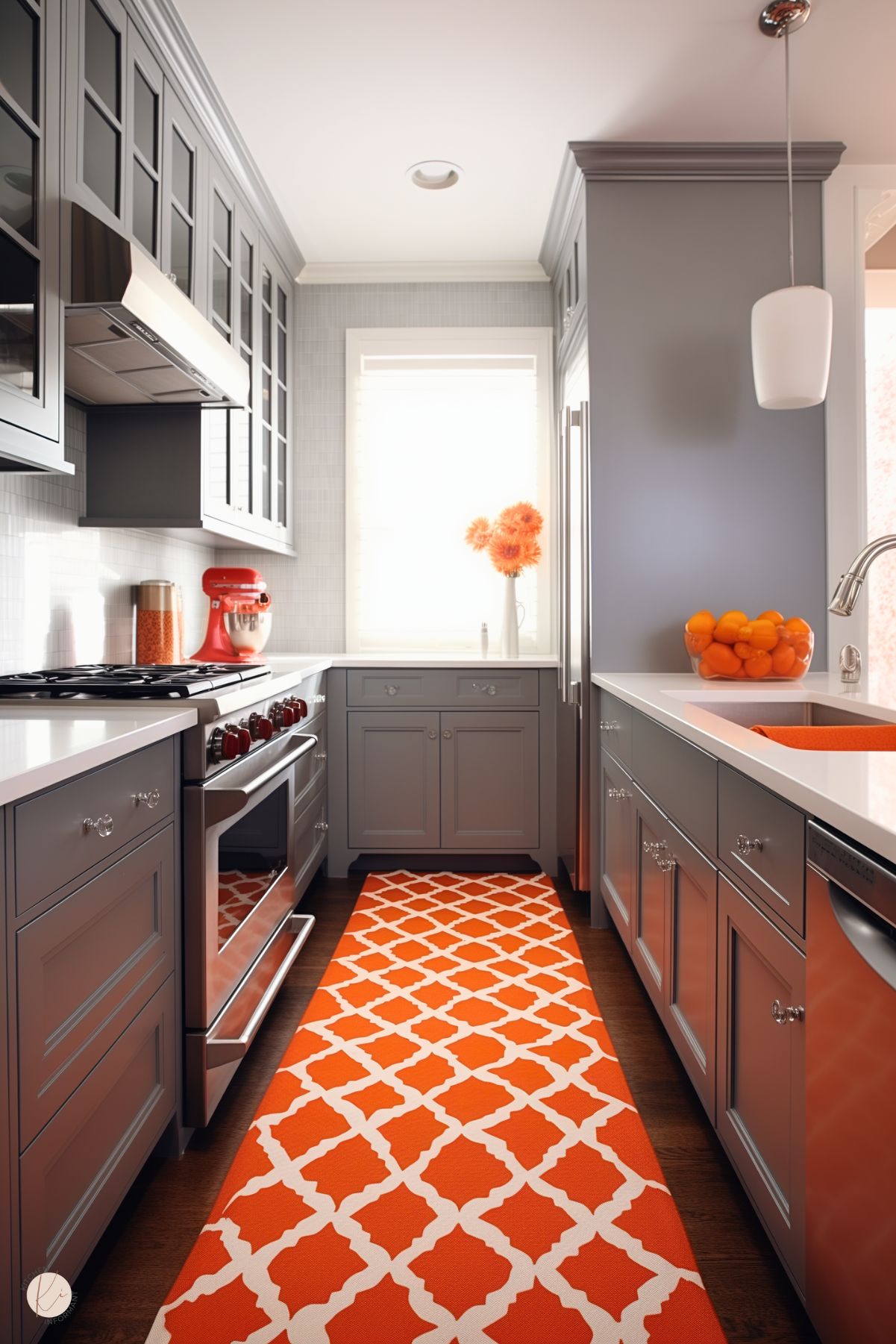
Color plays a vital role in kitchen design. It can change how people feel in the space. Different colors can create various moods, from calm to energetic.
Warm colors like red and orange can make a kitchen feel cozy and inviting. These colors can increase appetite, making them great for dining areas.
Cool colors such as blue and green promote relaxation. These shades can help create a peaceful cooking environment.
Here are some unexpected color combinations that work well:
- Navy blue with soft blush pink
- Rich olive green with warm caramel
- Fiery red paired with soft glazed tiles
Using contrasting colors can add drama to a kitchen. They highlight features like cabinets or countertops. Small touches, such as painted woodwork, can make a big difference.
Adding color can also showcase personal style. Whether it’s vibrant tiles or unique cabinetry, the options are endless.
Choosing the right colors can enhance the kitchen’s design and functionality. It’s all about finding a balance that feels right for the space.
Color Theory Basics for Kitchens
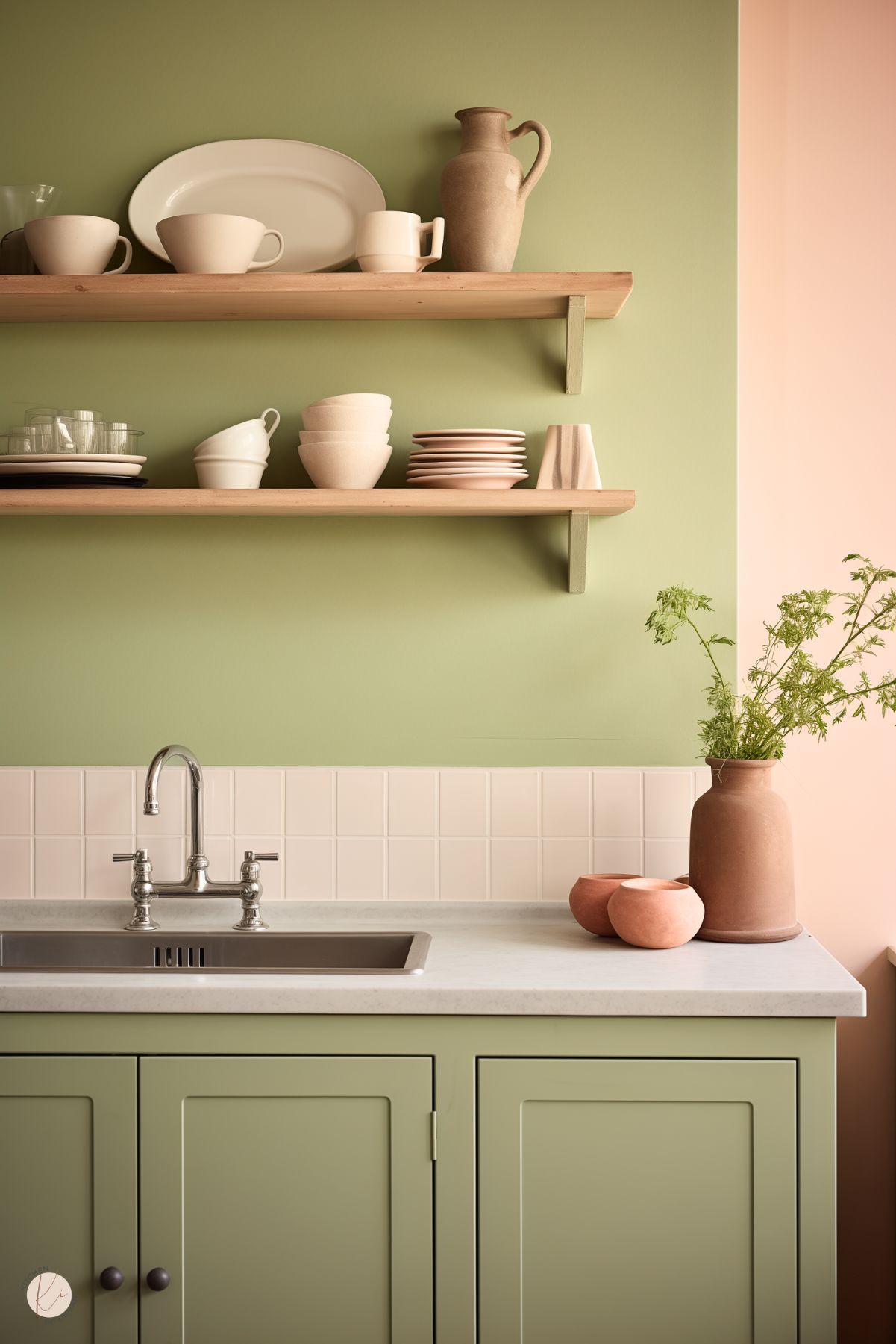
Color theory is an essential part of designing a kitchen. Understanding how colors work together can help create a space that feels welcoming and stylish.
There are three main color categories:
- Primary Colors: Red, blue, and yellow. These colors cannot be made by mixing others.
- Secondary Colors: Green, orange, and purple. These are created by mixing two primary colors.
- Tertiary Colors: These are combinations of primary and secondary colors, like red-orange and blue-green.
Using the color wheel can help homeowners choose combinations that work well.
For example, complementary colors are opposite each other on the wheel. They can create a vibrant look.
Here are some popular color combinations for kitchens:
- Blue and Orange: A bold, energetic mix that’s great for modern spaces.
- Teal and Mustard: Adds warmth while keeping a fresh feel.
- Charcoal and Lime Green: Dark tones provide a backdrop for bright accents.
Lastly, it’s essential to consider the mood that colors can create.
Warm colors like red and yellow can make a kitchen feel cozy. In contrast, cool colors like blue and green can evoke calmness and tranquility.
Unexpected Color Combinations that Delight
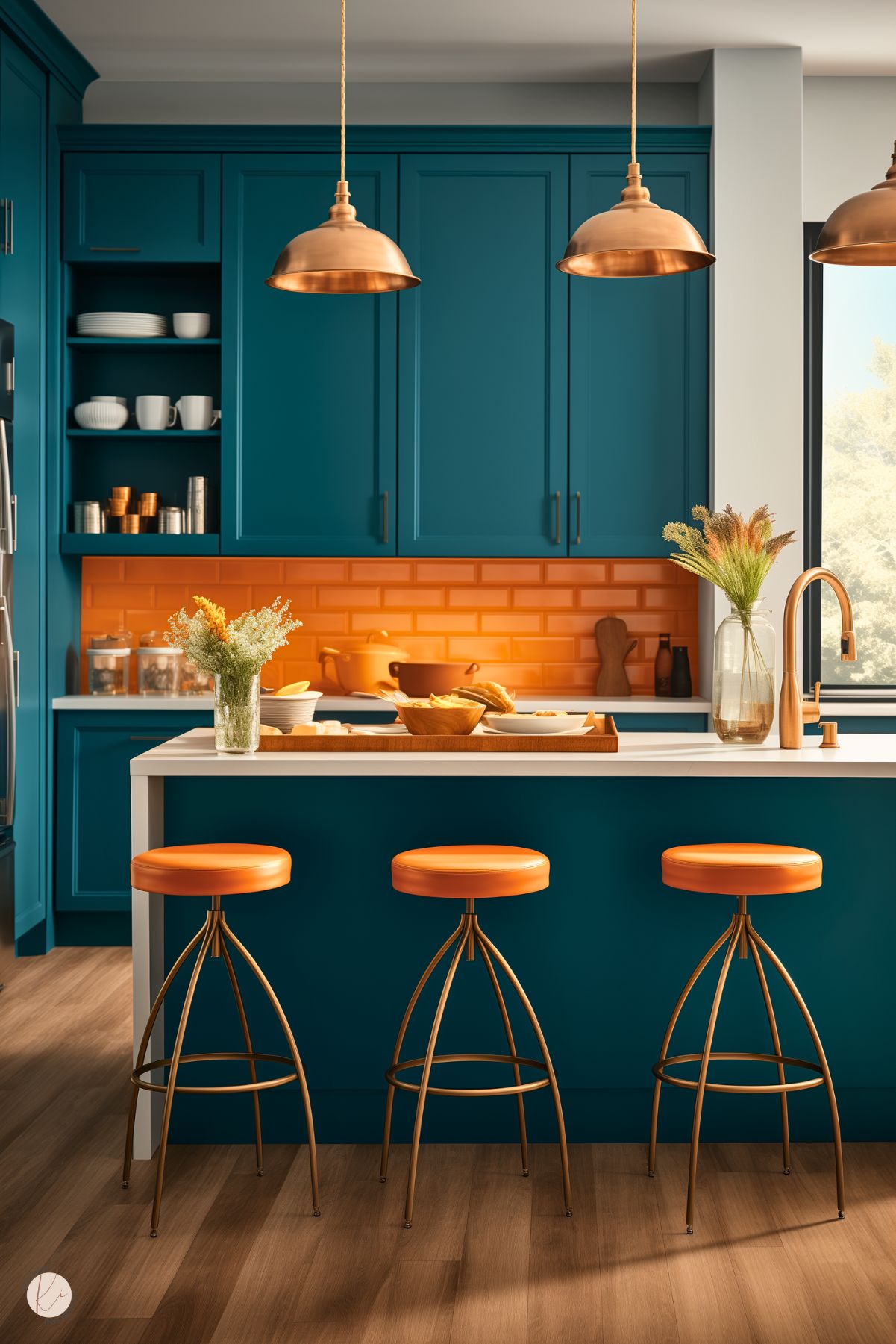
Exploring color combinations in the kitchen can bring surprising results.
By mixing bold and pastel hues, embracing contrasts between warm and cool shades, and adding unexpected neon touches to neutral backgrounds, anyone can create a delightful space that truly shines.
Bold and Pastel Pairings
Combining bold colors with pastels can create a lively yet balanced atmosphere.
For example, a deep navy blue paired with soft blush pink can add elegance and warmth to a kitchen.
Other successful combinations include bright orange with a light mint green or vibrant red with pale lavender.
These pairings can energize the space while keeping it inviting.
Using these colors in cabinetry, wall accents, or decorative items can turn a standard kitchen into a stunning culinary hub.
Warm and Cool Contrasts
Mixing warm and cool colors can create visual interest.
Warm tones like rich yellows or deep oranges can contrast beautifully with cool shades like serene blues or calming greens.
Consider a kitchen featuring a bold golden yellow island alongside soft blue cabinetry. This contrast draws the eye and adds depth to the design.
Using these colors in various elements, such as backsplashes and appliances, can lead to a contemporary yet comfortable kitchen environment.
Neutral and Neon Surprises
Neutral colors provide a clean backdrop, allowing neon accents to pop effectively.
Shades like white, gray, or beige can make spaces feel larger and more open.
Incorporating neon green or hot pink accessories, such as bar stools or wall art, can add excitement.
This playful approach brings a youthful vibe that brightens the kitchen.
Careful balance is essential to prevent overwhelming the space.
By selectively choosing where to add neon, the kitchen can maintain its elegance while showing off personality.
Integrating Bold Color Combos into Your Kitchen
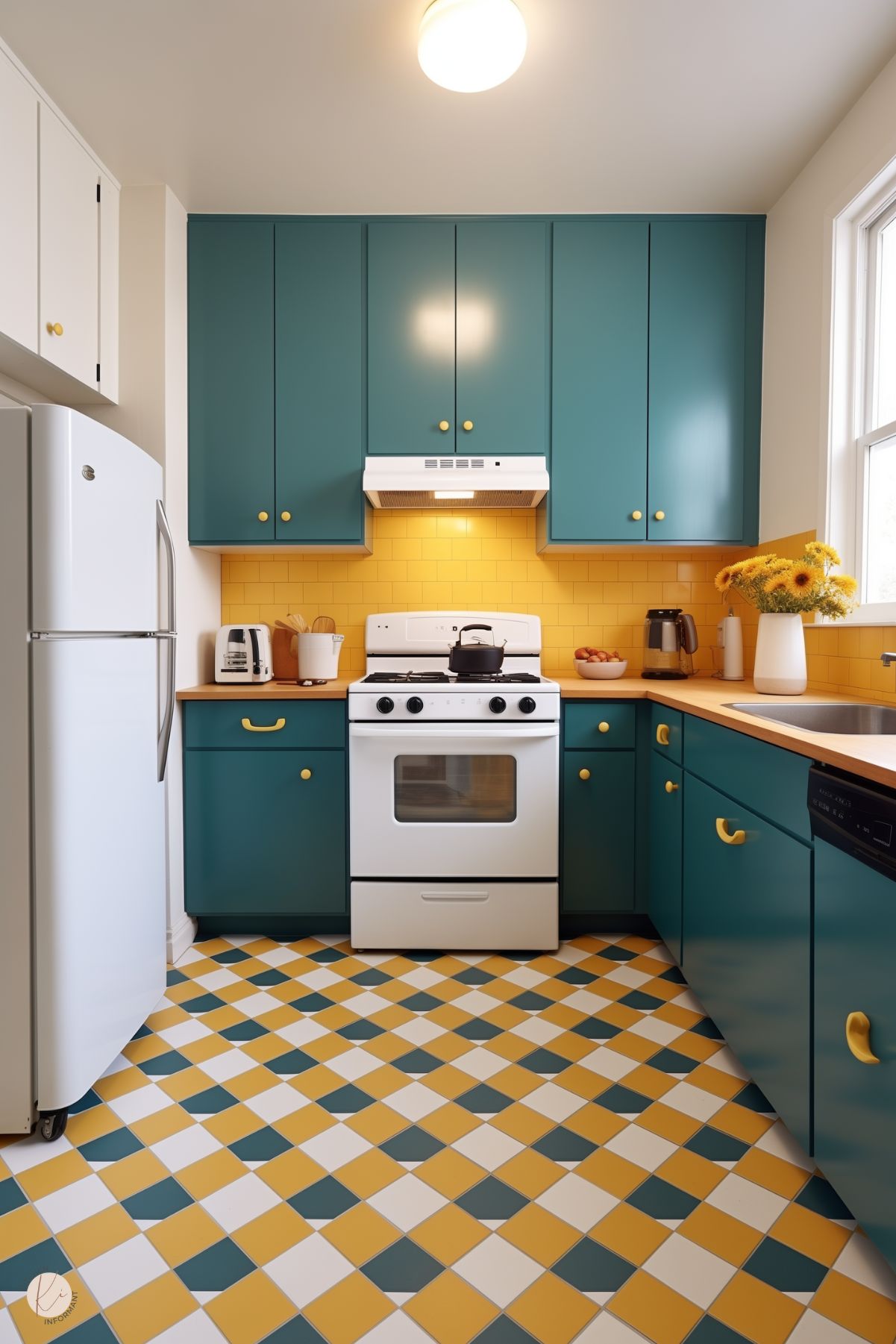
Using bold colors in a kitchen can transform the space into something vibrant and unique.
By focusing on specific elements like accent walls, colorful cabinets, and creative decor, one can achieve a stunning kitchen that is both functional and stylish.
Accent Walls and Backsplashes
Adding an accent wall is a great way to introduce bold colors without overwhelming the space.
A bright hue, such as teal or deep yellow, can create a focal point in the kitchen.
Likewise, a colorful backsplash can enhance the overall design.
Options like mosaic tiles in rich colors or geometric patterns can add depth and interest.
When selecting colors, consider how they coordinate with other elements, like cabinetry and countertops.
A well-chosen accent can elevate the entire kitchen while showcasing personal style.
Colorful Cabinets and Hardware
Colorful cabinets can redefine a kitchen’s appearance.
Instead of sticking to traditional neutrals, choosing bold options like navy blue or forest green brings vitality to the space.
Mixing these cabinets with unique hardware, such as gold or matte black handles, adds an extra layer of personality.
It’s essential to think about the balance between colors and materials.
For example, lighter countertops can complement darker cabinets, creating harmony in the design.
Creative Use of Appliances and Decor
Incorporating colorful appliances can make a big statement in a kitchen.
Brands now offer refrigerators, ovens, and microwaves in shades like red or aqua. These items can serve as functional art pieces while infusing personality into the room.
Decor also plays a crucial role.
Bright dishware, vibrant kitchen linens, and wall art can enhance the color scheme.
When using decor, mix and match colors that either complement or contrast with the appliances and cabinetry.
This layering of colors brings dynamism and warmth to the kitchen.
Color Coordination with Kitchen Elements
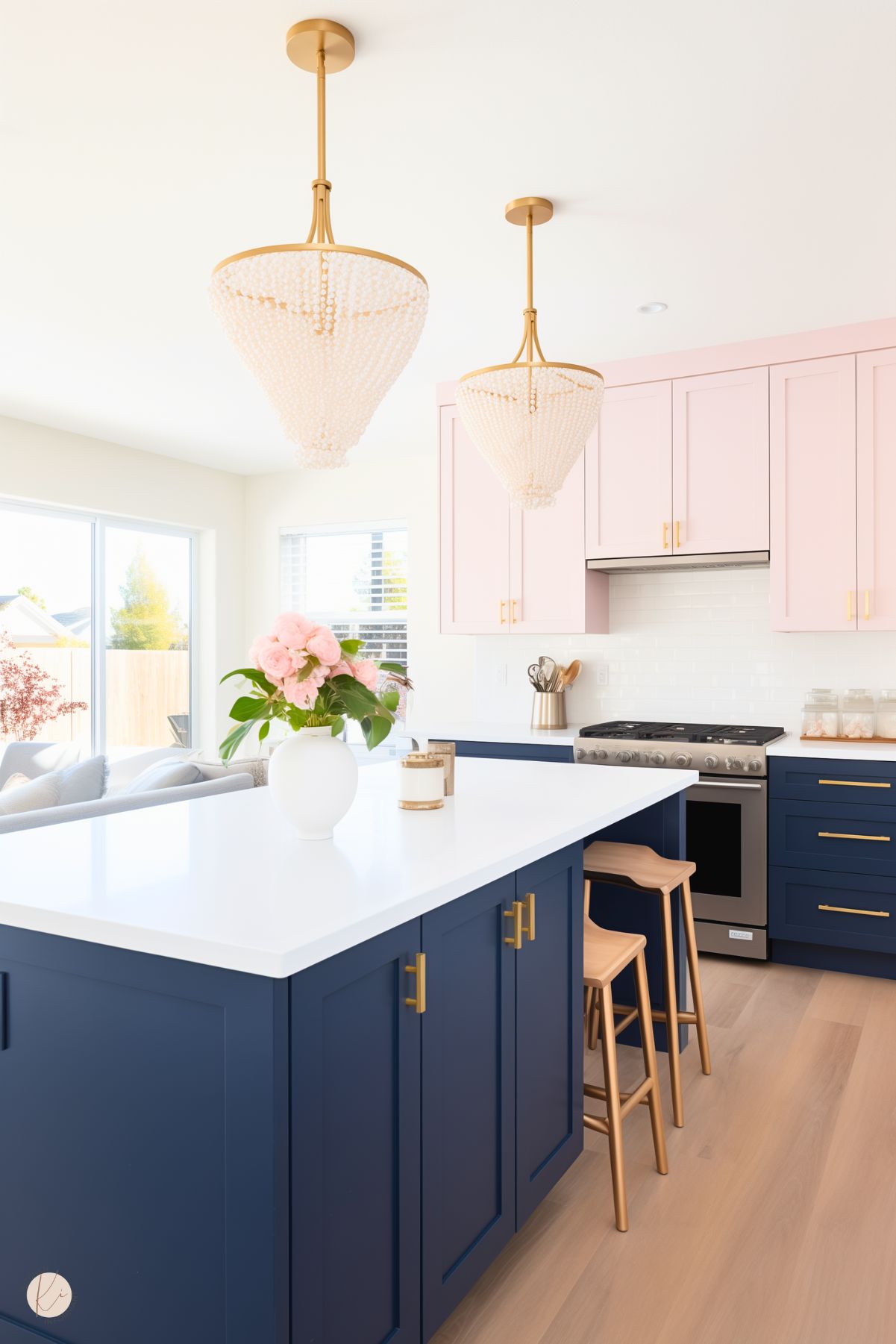
Choosing colors for kitchen elements is key to creating a harmonious space. Coordinating colors with countertops, flooring, lighting, and fixtures can enhance the overall look of a kitchen.
Countertops and Flooring
When coordinating countertops and flooring, it is essential to consider both color and texture.
For instance, a bold, patterned countertop can be paired with simple, solid flooring to create balance.
Popular Combinations:
- Light Gray Countertops: Works well with dark wood or tile flooring.
- White Marble Countertops: Compliments both light and dark flooring, creating a classic look.
- Bold Colors: If a homeowner opts for vibrant countertops, neutral flooring can keep the space cohesive.
Textures can also play a significant role.
A glossy countertop can contrast nicely with a matte floor, making both elements stand out.
Lighting and Fixtures
Lighting and fixtures bring color and ambiance to the kitchen. Choosing fixtures that complement the overall color scheme is important.
Key Considerations:
- Finish: Metallic finishes like brass or chrome can add elegance. They work best with neutral or muted tones.
- Color: Choose pendant lights or chandeliers that mirror the colors in the countertops or cabinetry.
Accent lighting can also enhance color.
Using under-cabinet lighting can highlight specific hues in countertops or tiles.
Maintaining Aesthetic Balance
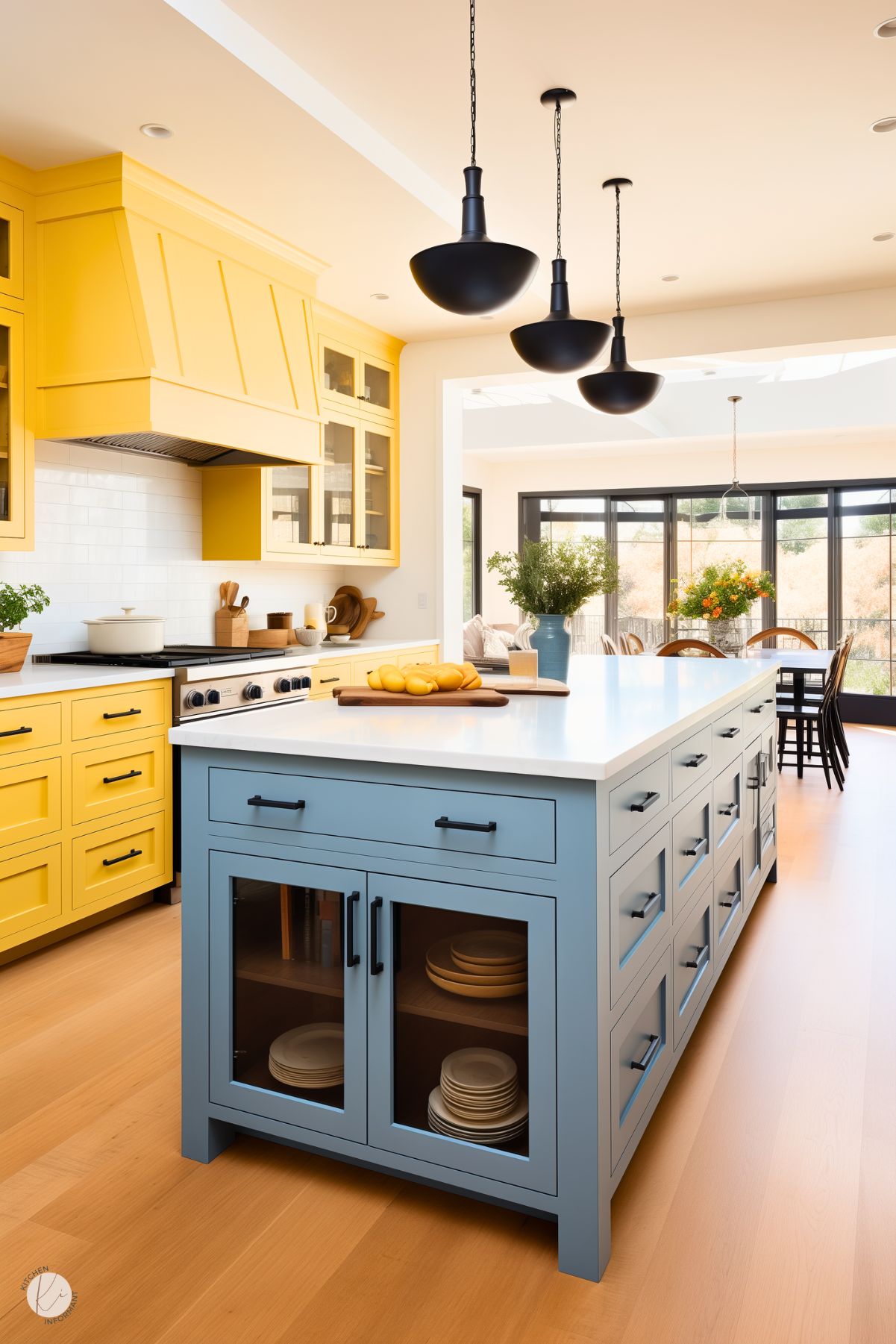
Creating a balanced look in a kitchen with unexpected color combinations requires careful attention to color harmony and placement.
By blending colors and textures thoughtfully, one can achieve a cohesive design that is both appealing and functional.
Harmonizing Colors and Textures
To maintain aesthetic balance, it’s essential to choose colors that complement each other.
Using a color wheel can guide selection. For example, pairing warm and cool tones creates contrast without clashing.
Textures also play a critical role.
Combining matte finishes with glossy surfaces can add depth.
For instance, pairing a matte navy with glossy white cabinetry can create a striking look.
Using fabrics like cotton or linen for accents, such as curtains or seat cushions, can soften a bold palette.
This approach helps tie different colors together while maintaining comfort.
Strategic Color Placement
Where colors are placed impacts the overall feel of the kitchen. It’s often best to use brighter, bolder colors in smaller areas, like an accent wall or décor items.
This can bring energy without overwhelming the space.
In larger areas, softer shades should dominate, creating a calming effect. For example, soft blush on the walls can make a kitchen feel airy.
Additionally, consider the flow of color across various surfaces. Consistent color use across countertops, cabinets, and accessories can tie the design together.
Accentuating a few key areas, like a navy backsplash or mustard yellow bar stools, can make those elements stand out beautifully.
Tips for Choosing Your Unique Kitchen Palette
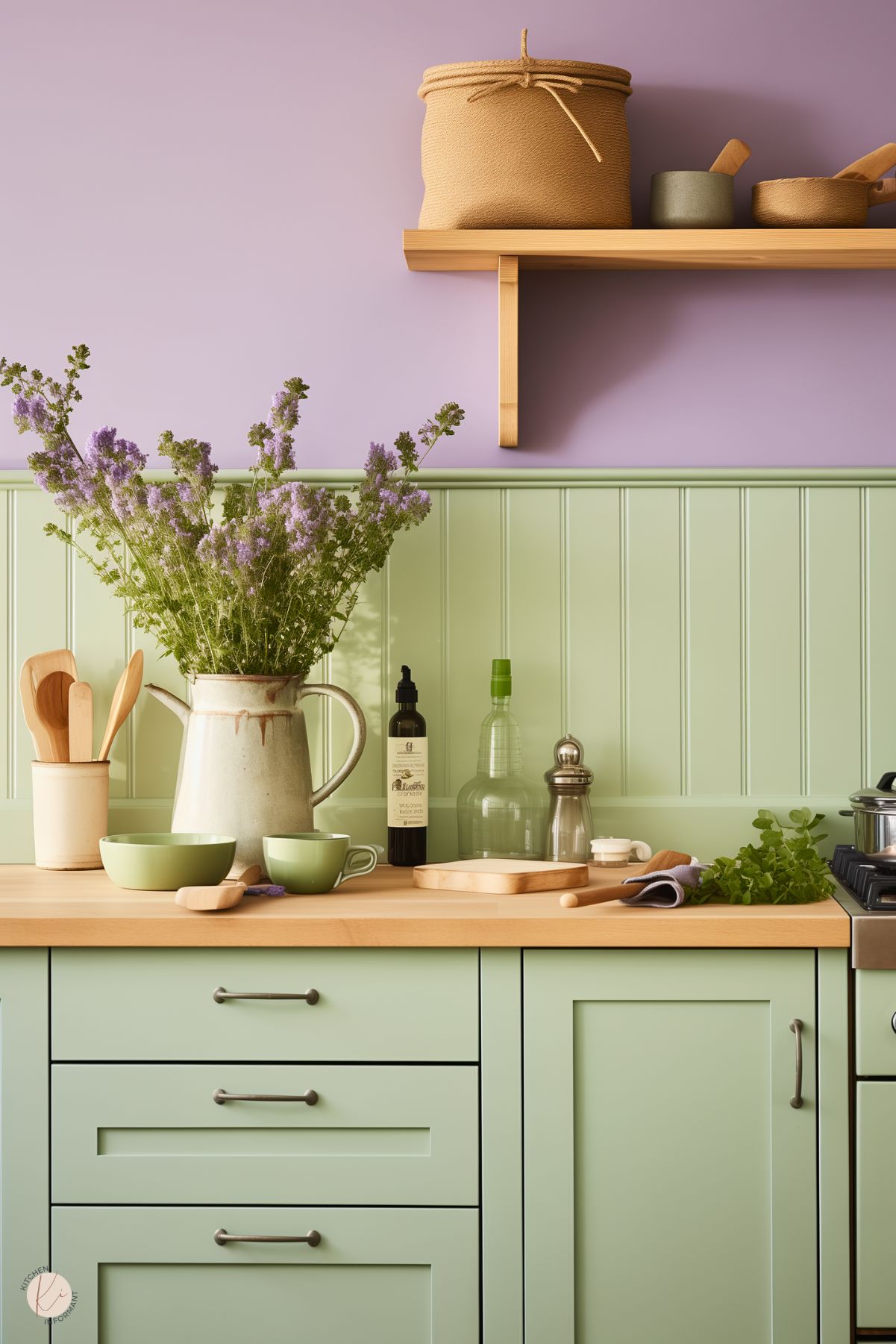
Choosing a unique kitchen palette can be fun and rewarding. Here are some tips to help anyone create a space that feels personal and inviting.
1. Start with Inspiration
Look for color combinations in magazines, online, or even nature. Collect images that catch the eye. This can help form a base for the color scheme.
2. Use the 60-30-10 Rule
This design rule suggests using:
- 60% a dominant color for walls
- 30% a secondary color for cabinets or large furniture
- 10% an accent color for smaller items like decor or accessories
3. Consider Lighting
Colors can look different in various lighting. Try to see how chosen colors appear in natural light and under artificial bulbs before making a final decision.
4. Test Samples
Before fully committing, paint small sections of the kitchen. This allows for a real sense of how colors interact with each other in the space.
5. Don’t Be Afraid to Mix
Unexpected pairings can create exciting designs. Pair light tones with darker shades or even warm colors with cool hues for a surprising effect.
6. Reflect Personal Style
The colors should reflect personal taste. Whether it’s bold or subtle, the right palette can make the kitchen feel truly unique.
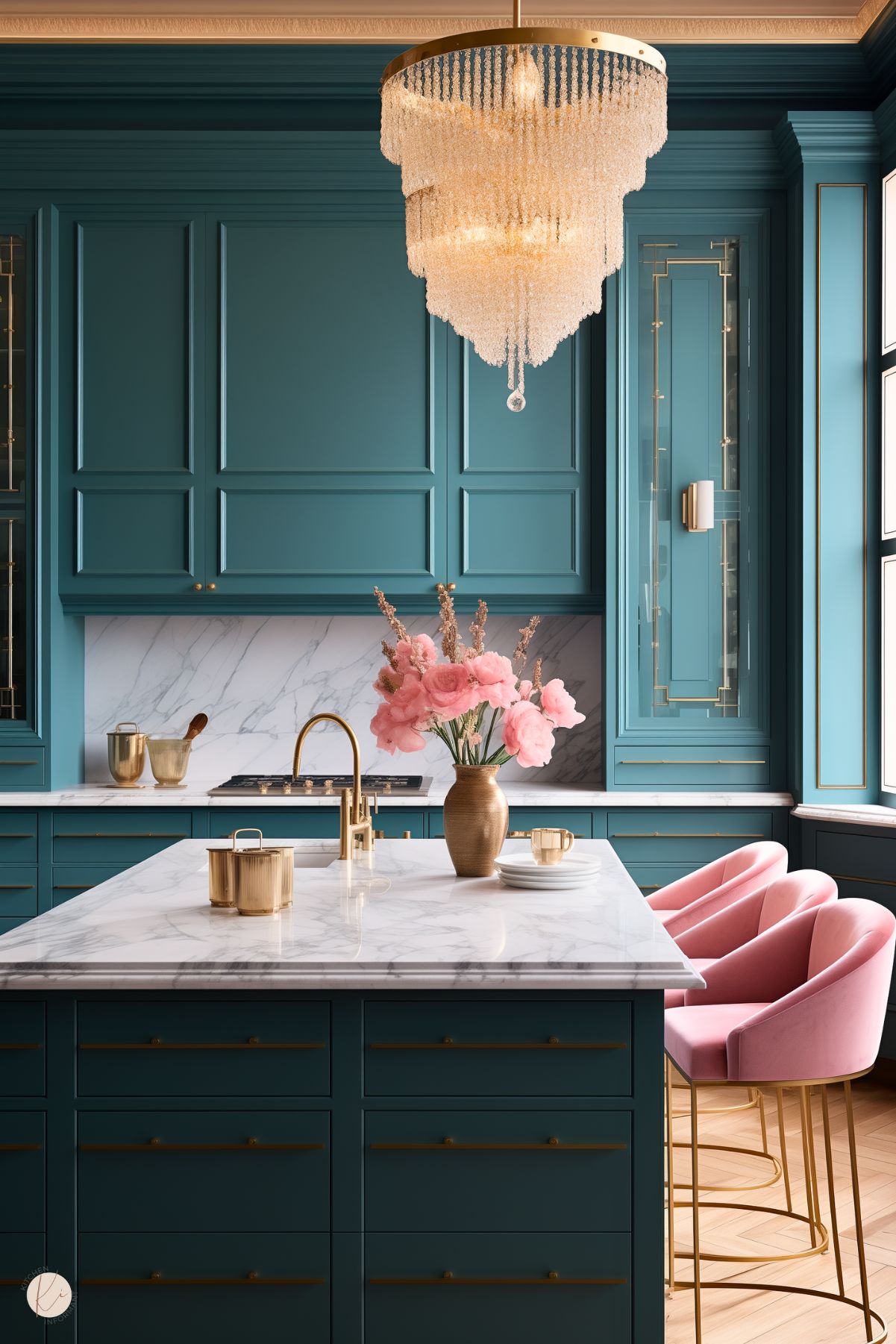
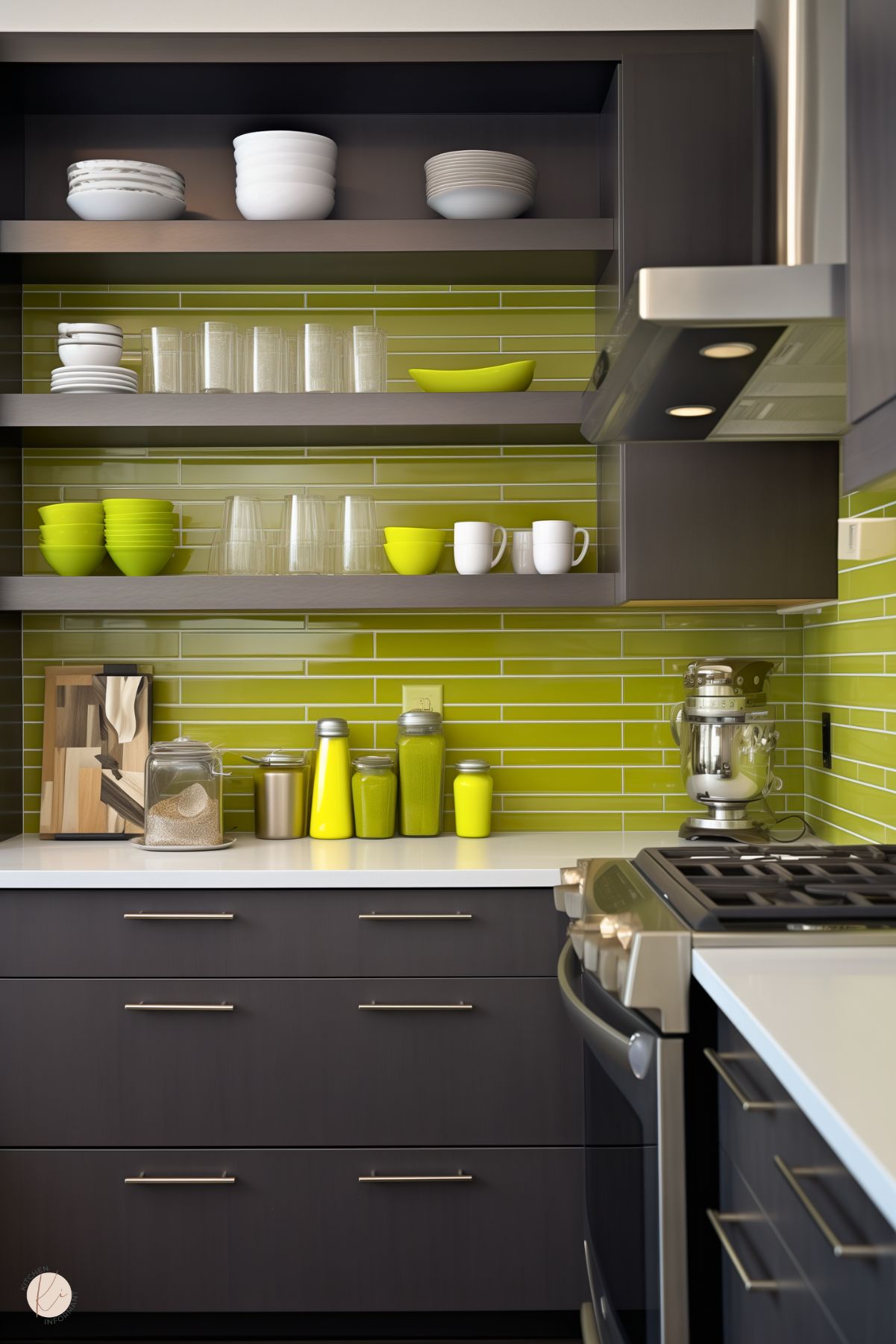
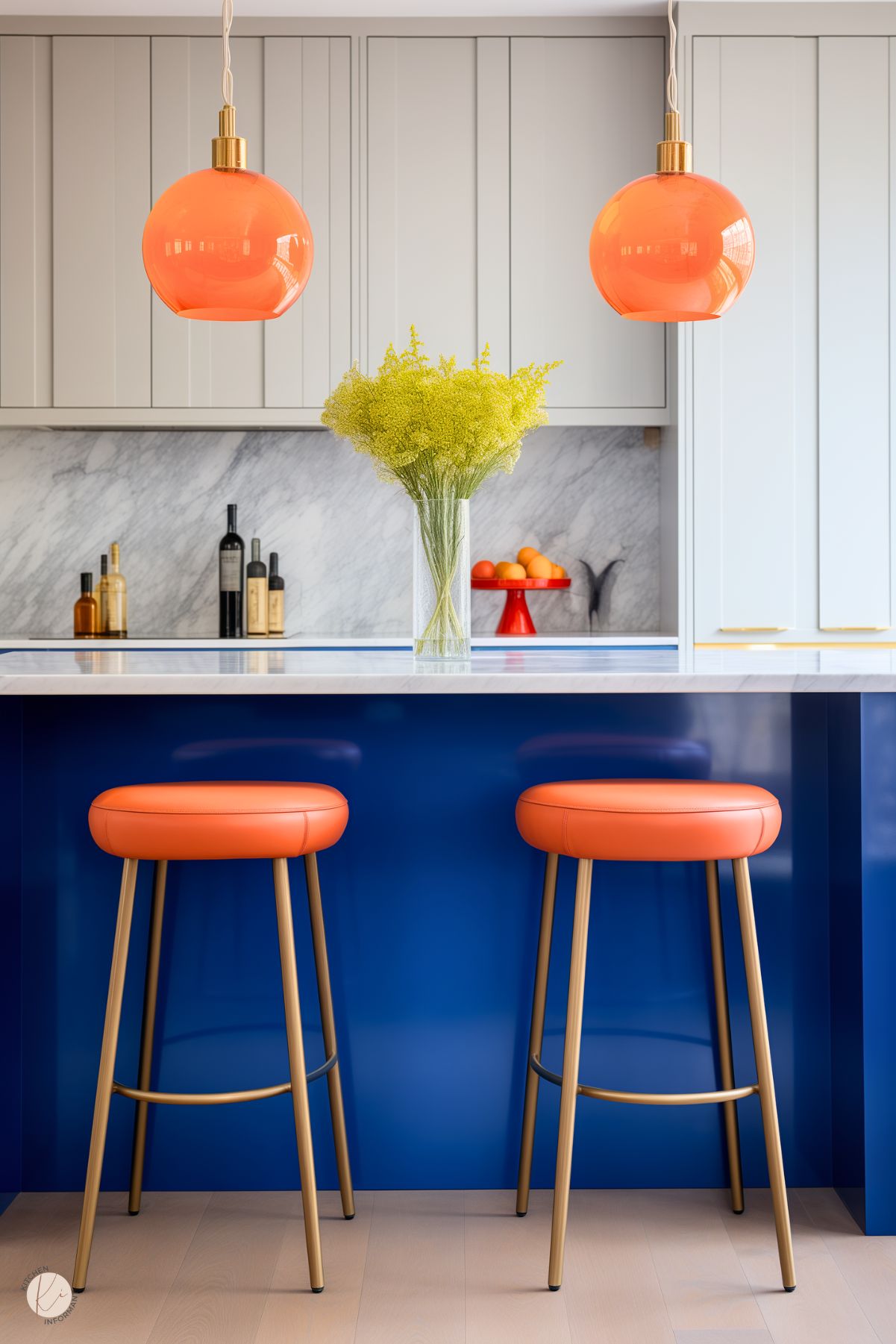
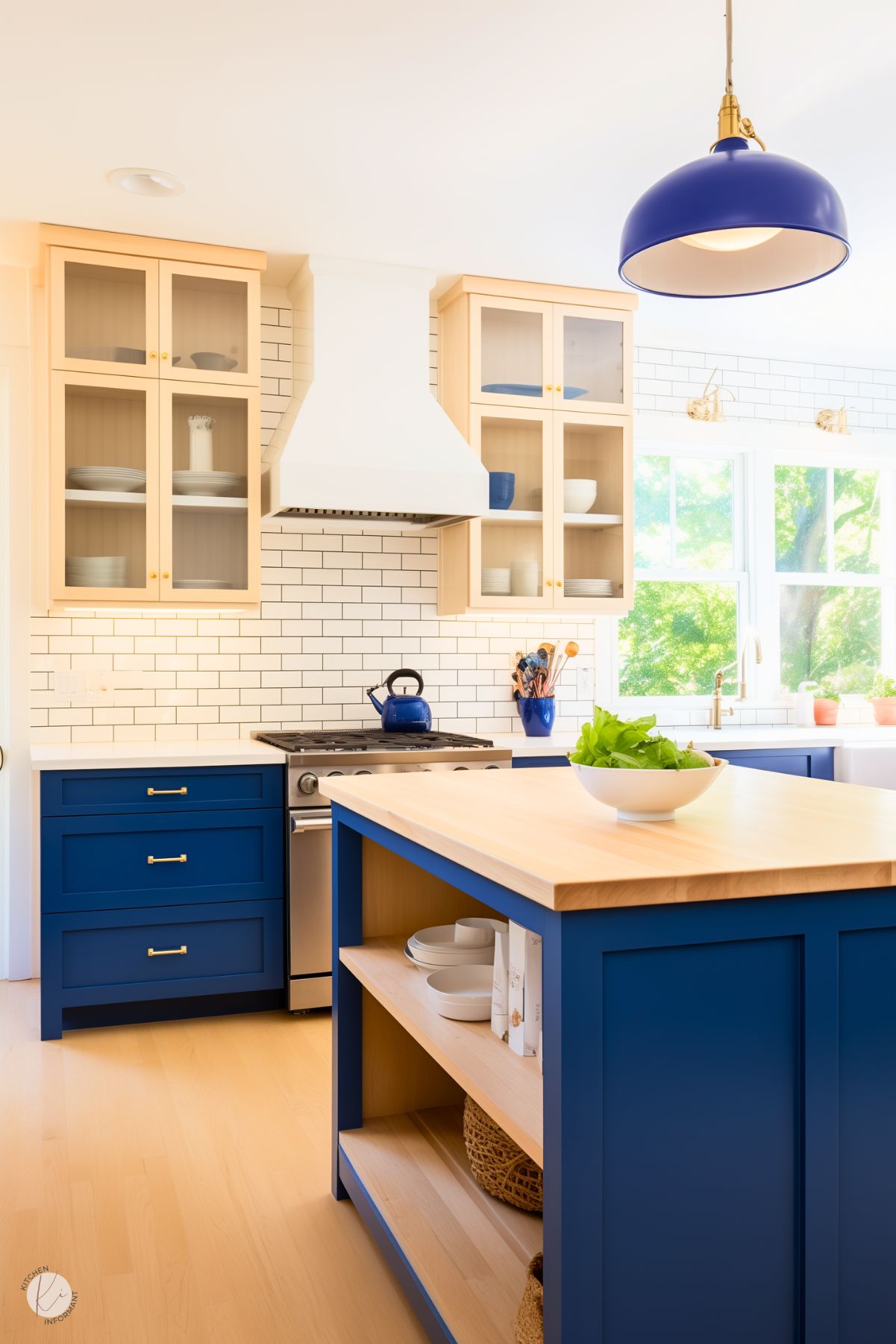
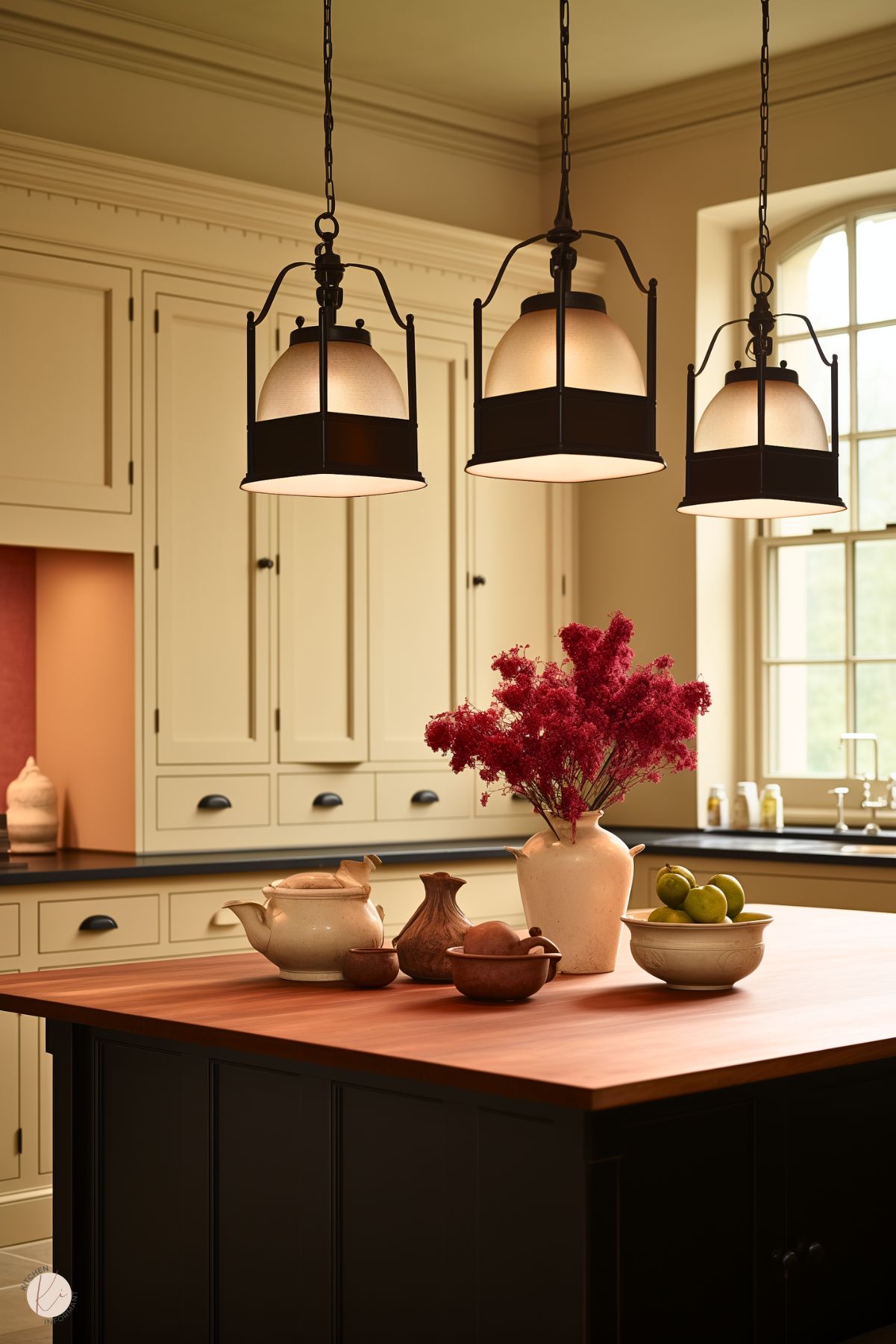
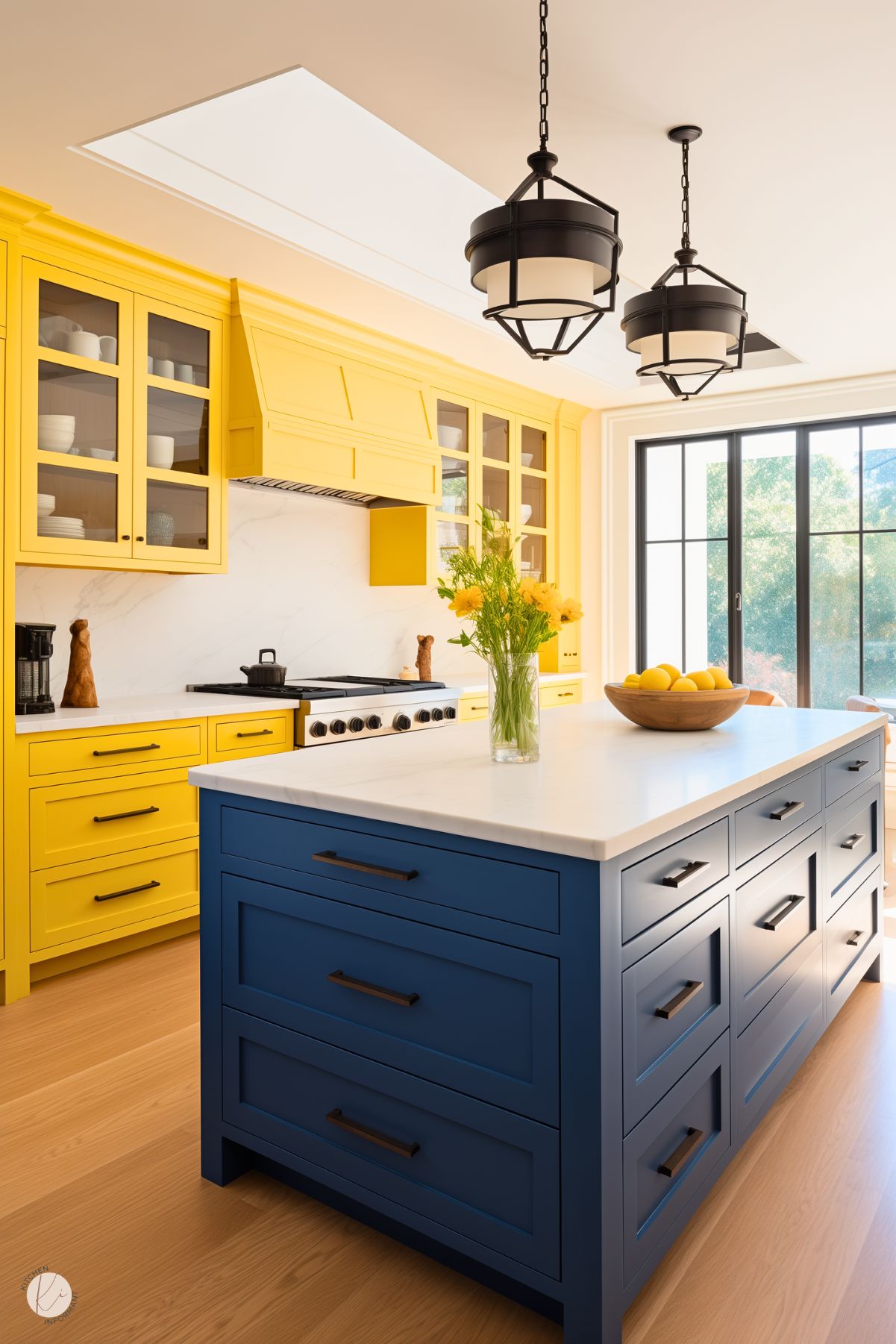
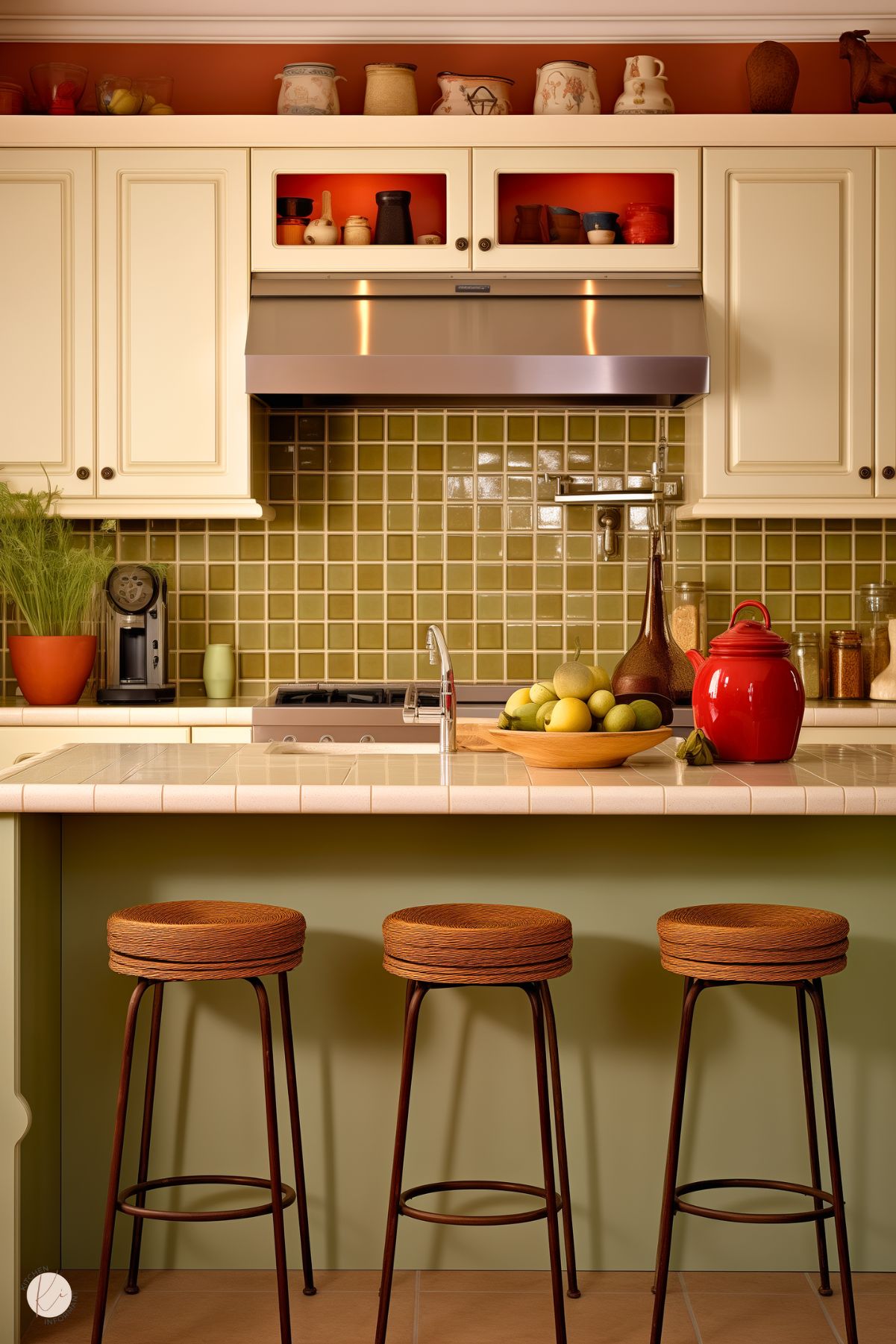
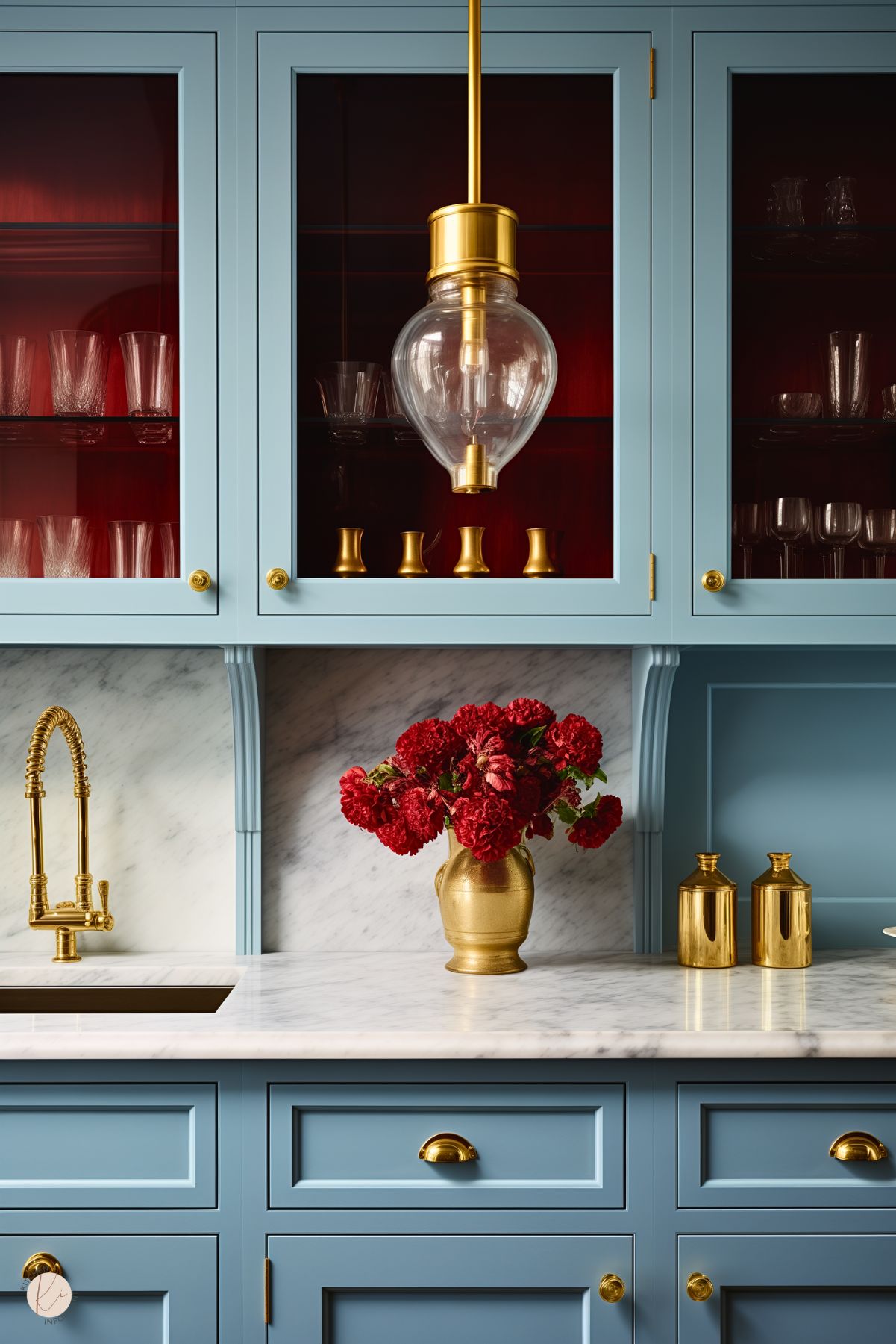
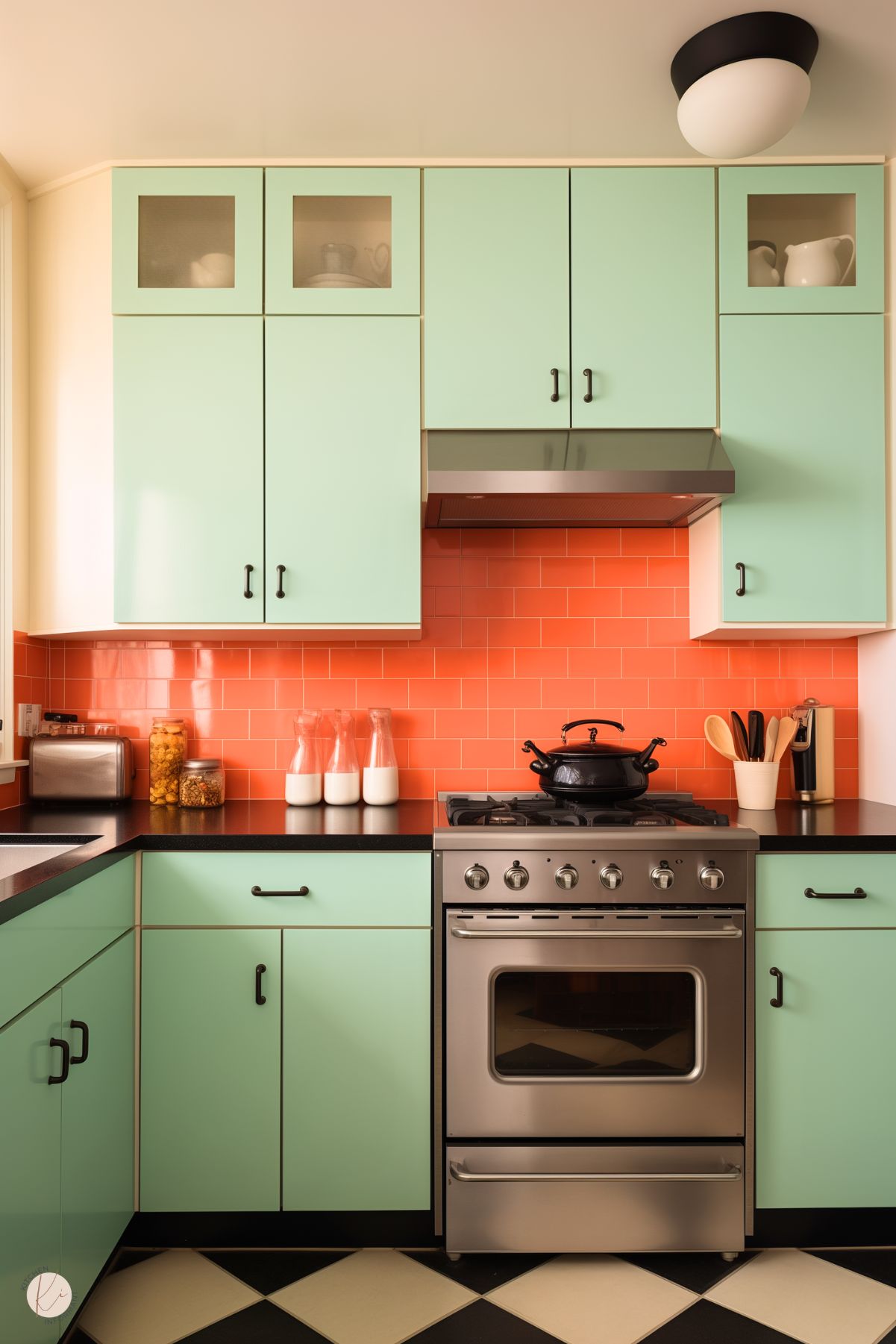
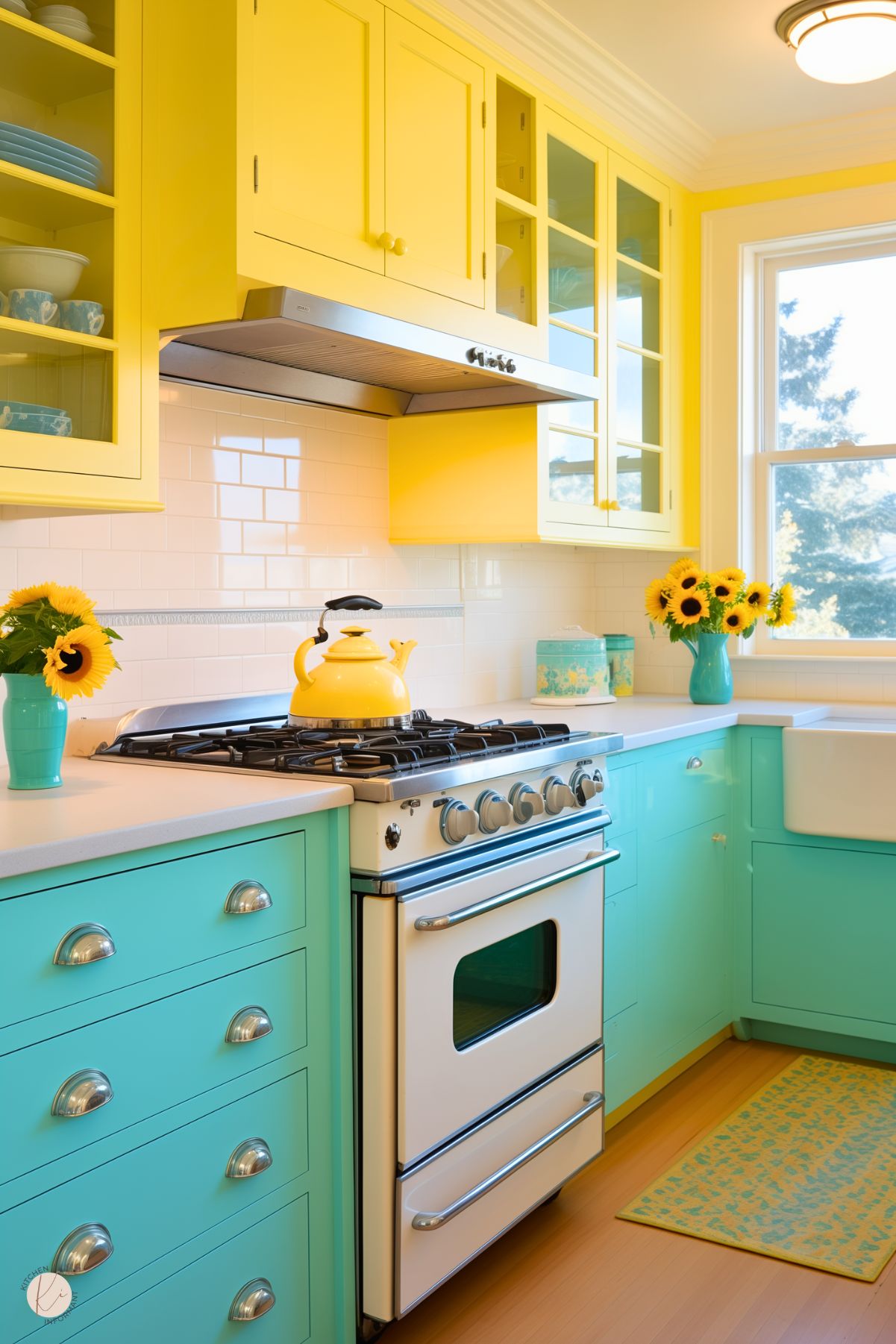
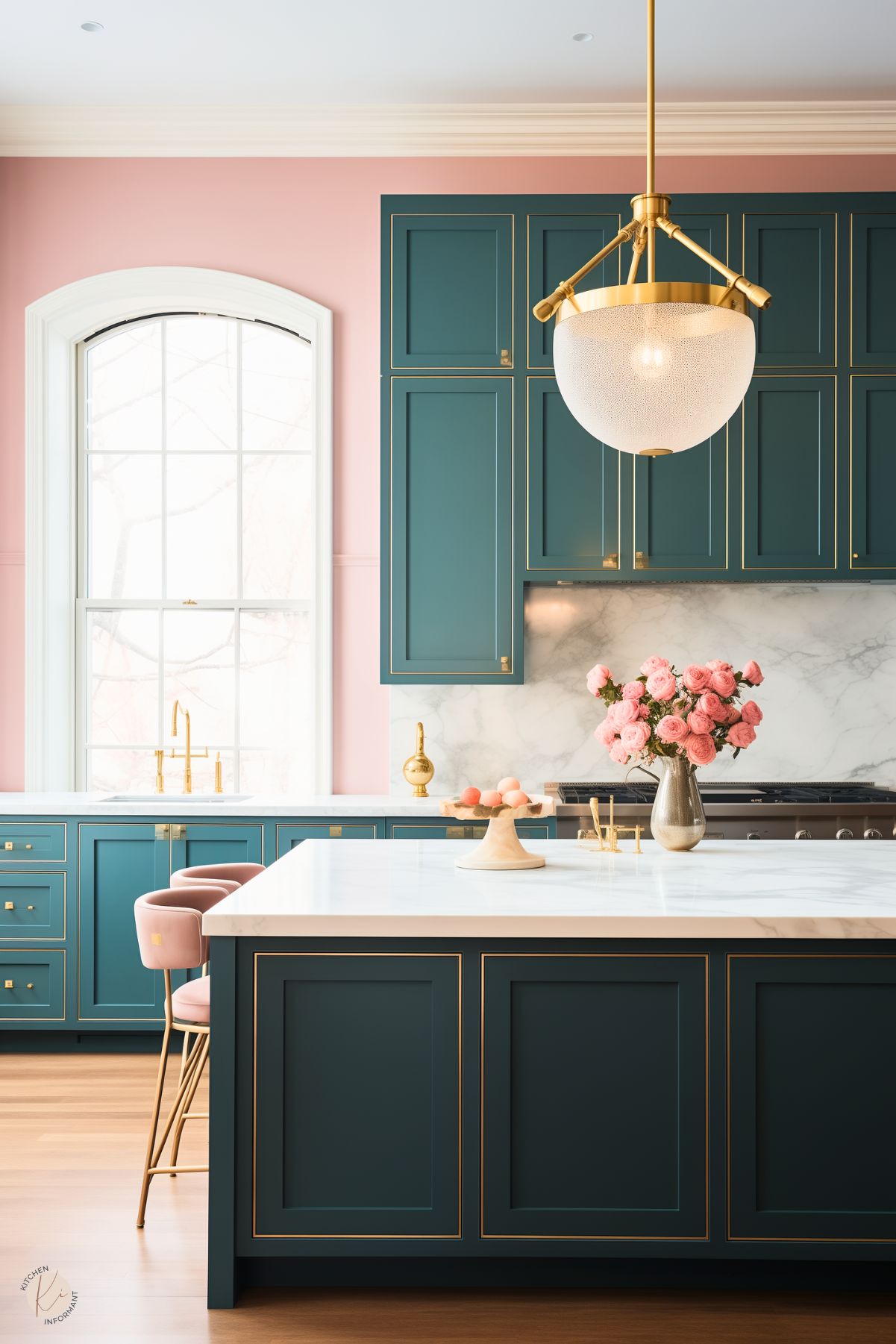
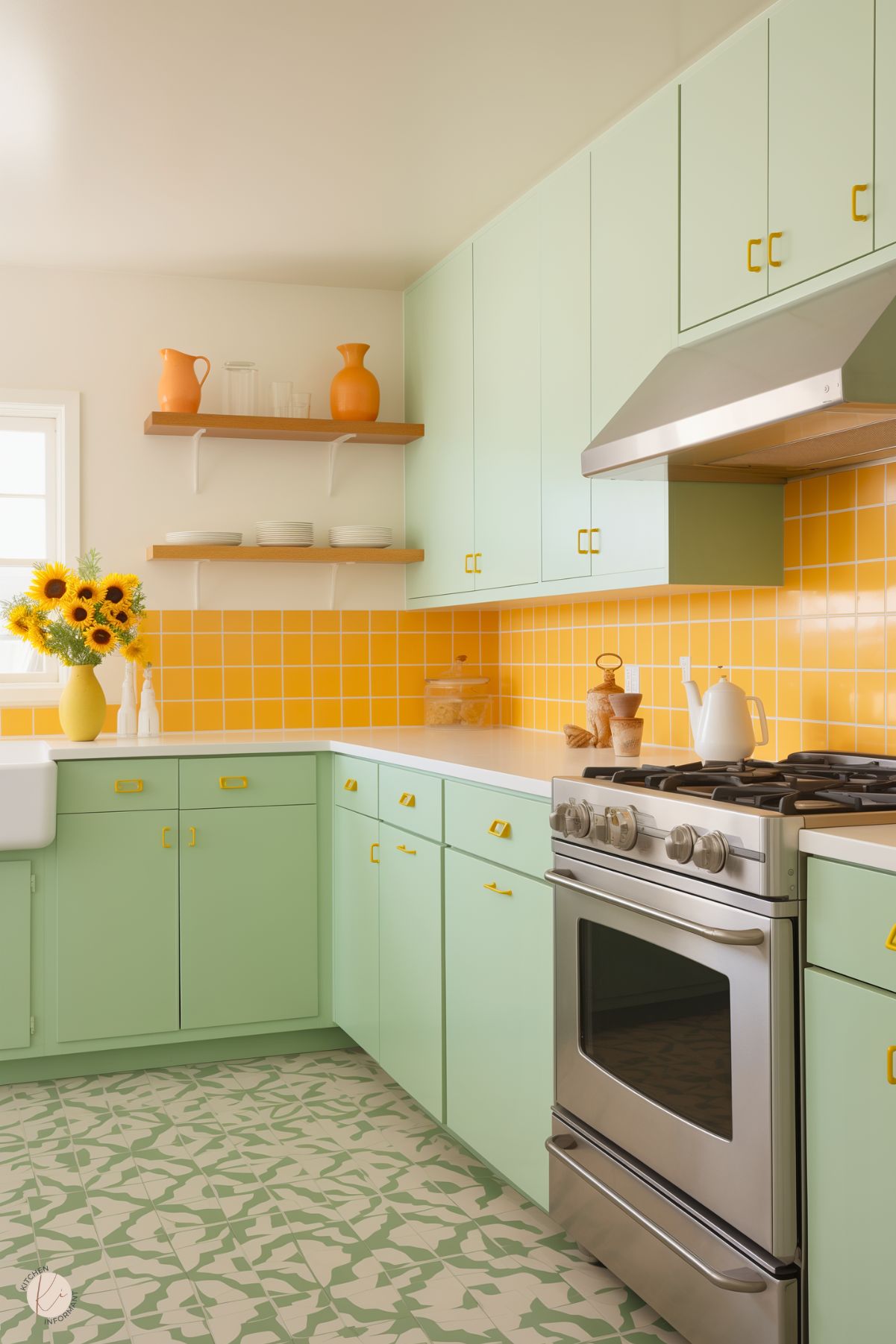
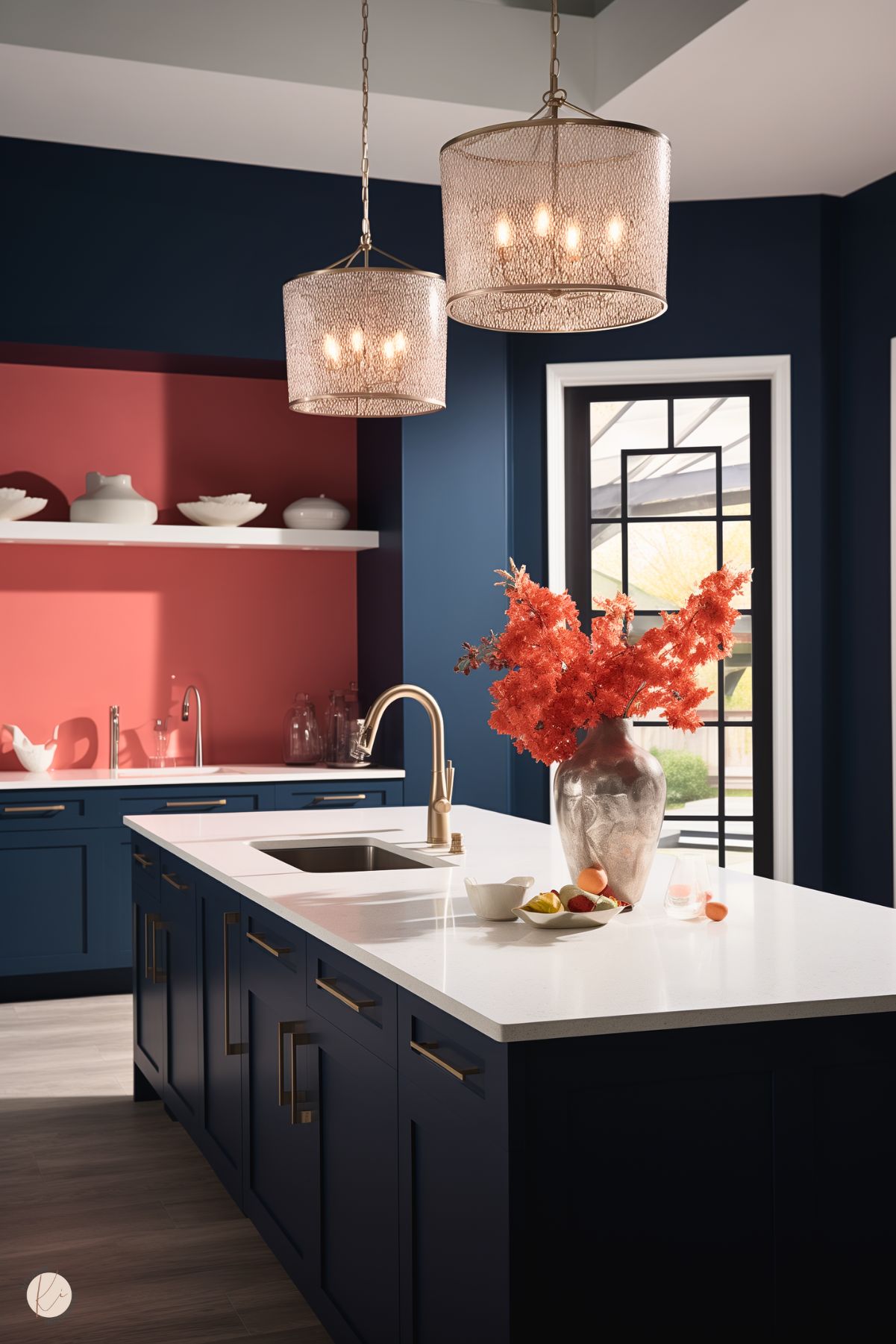
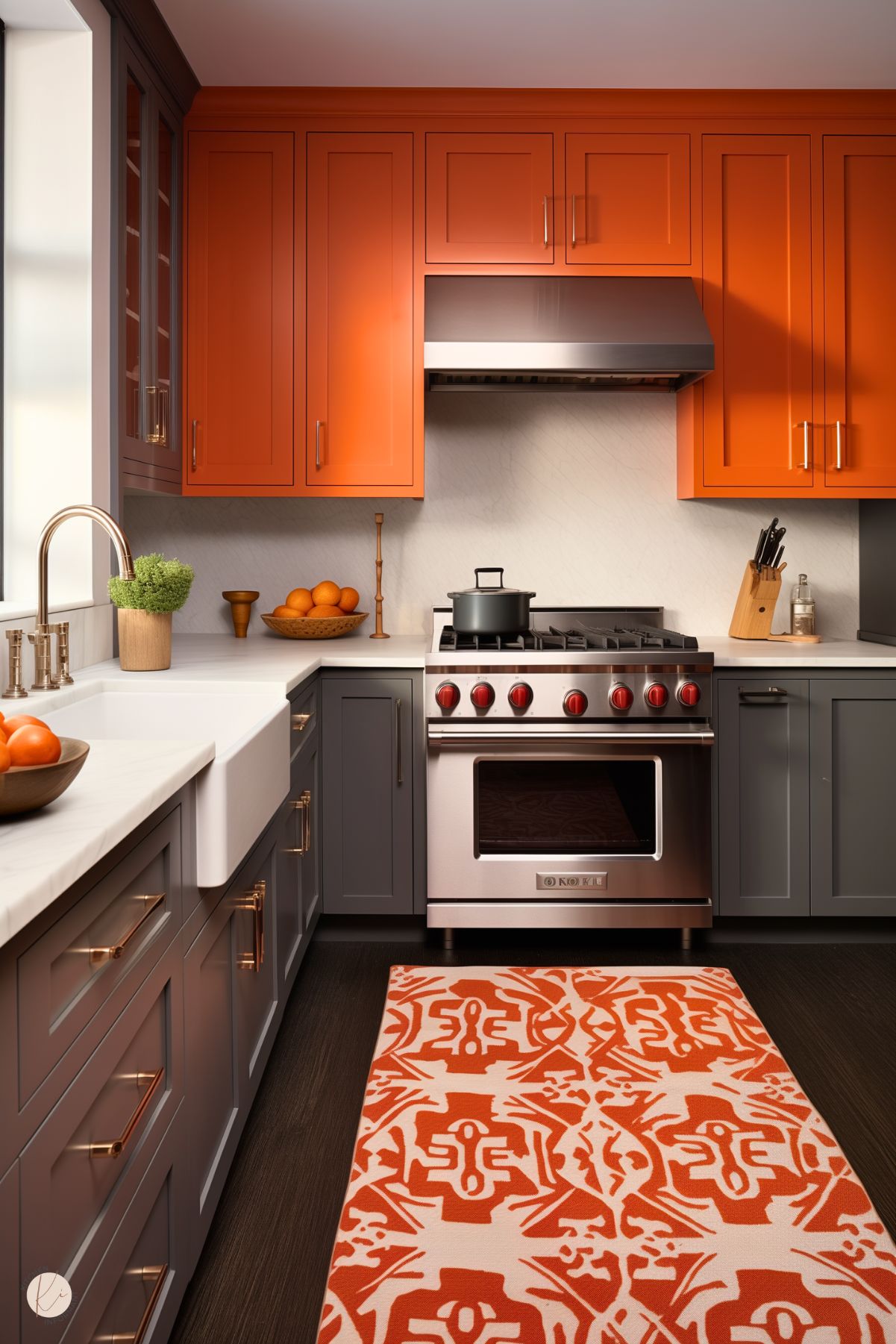
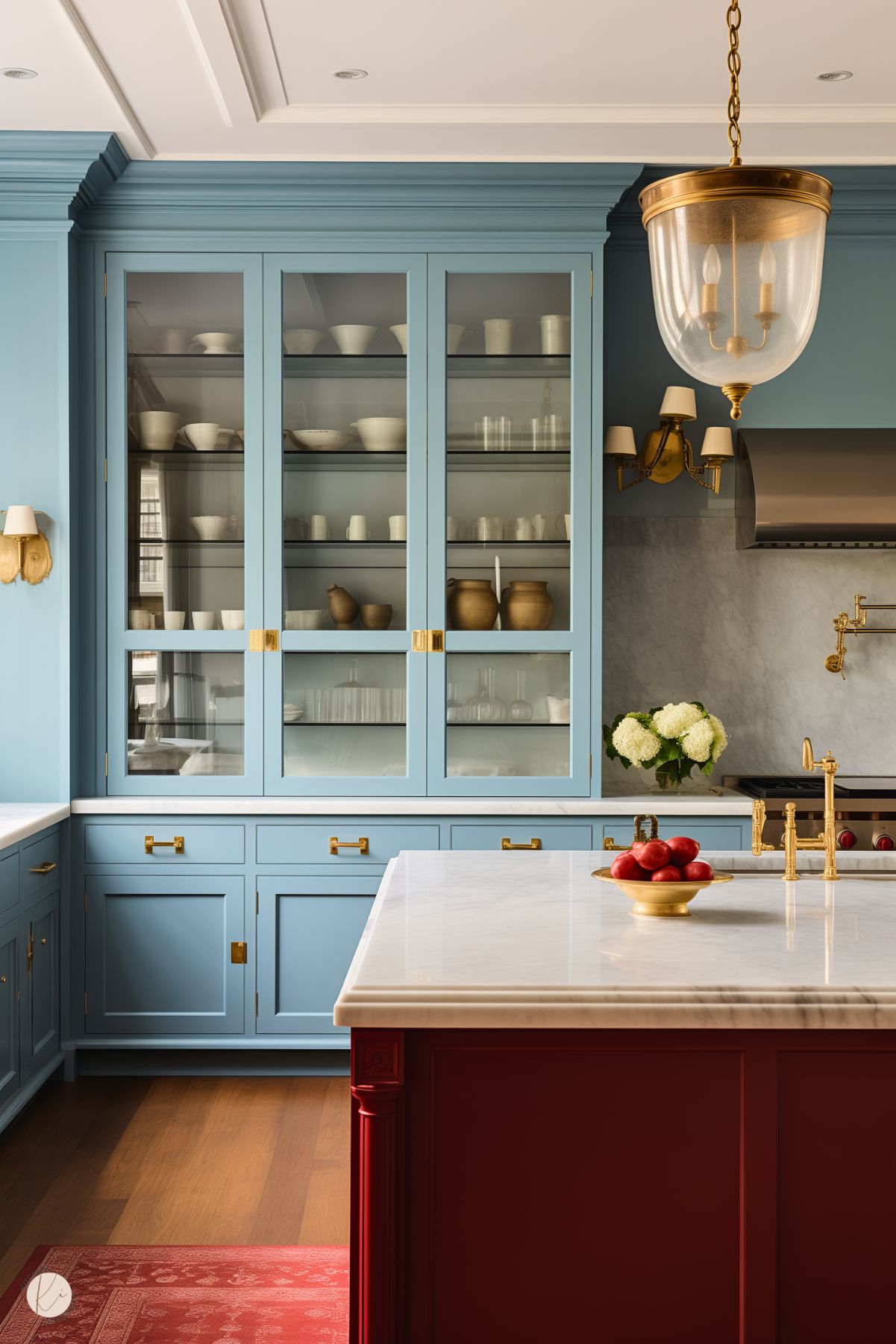
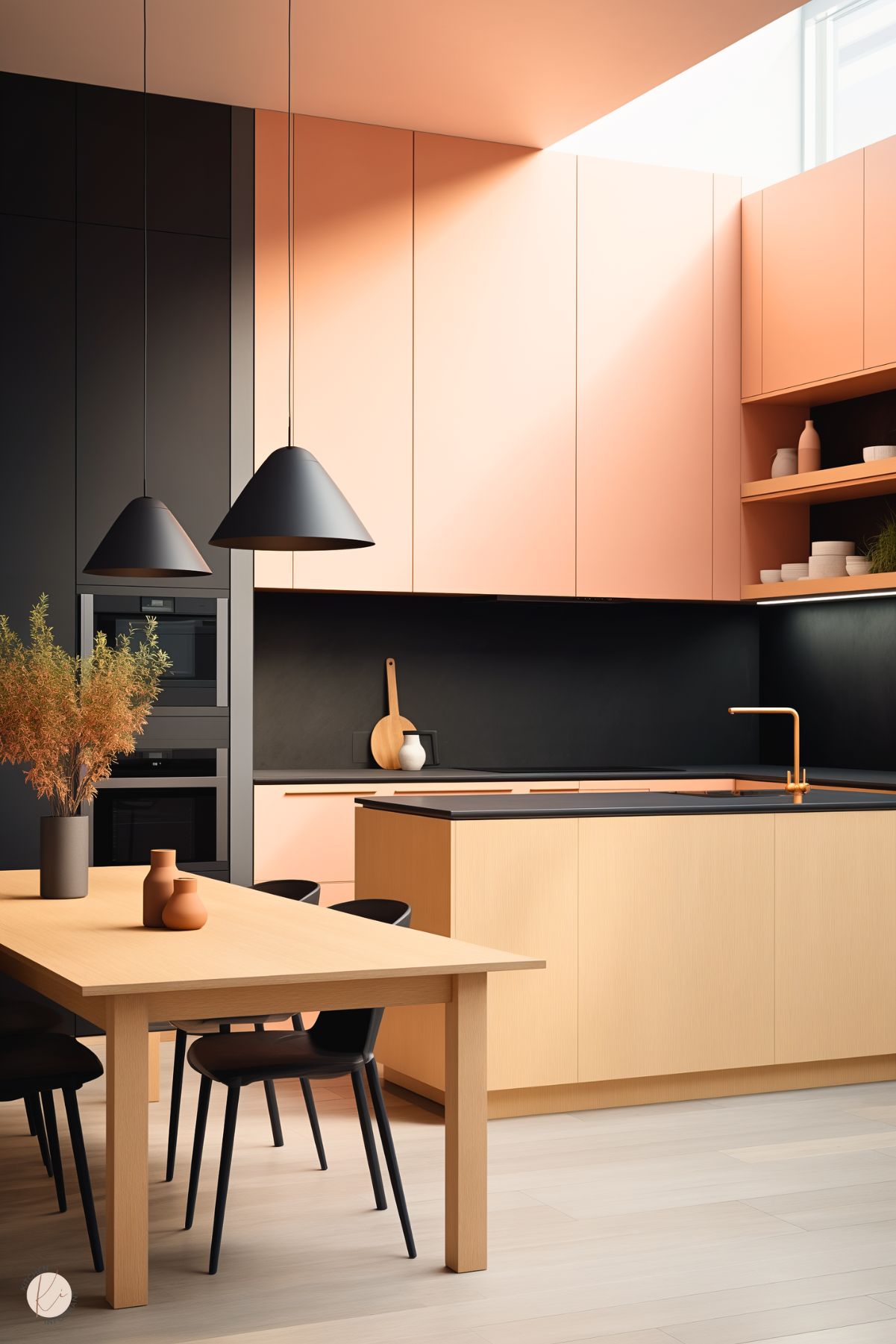
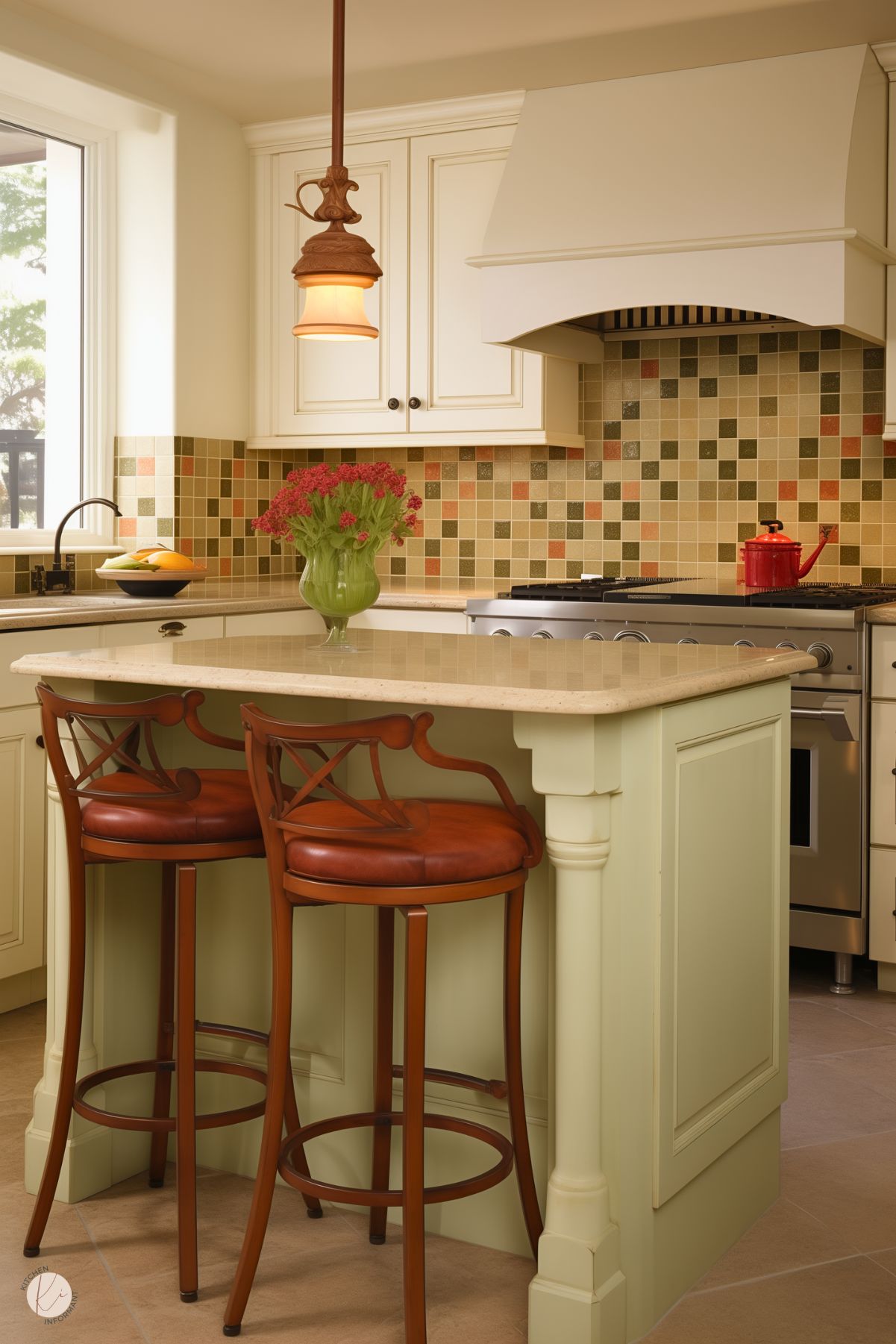
You May Also Like:
